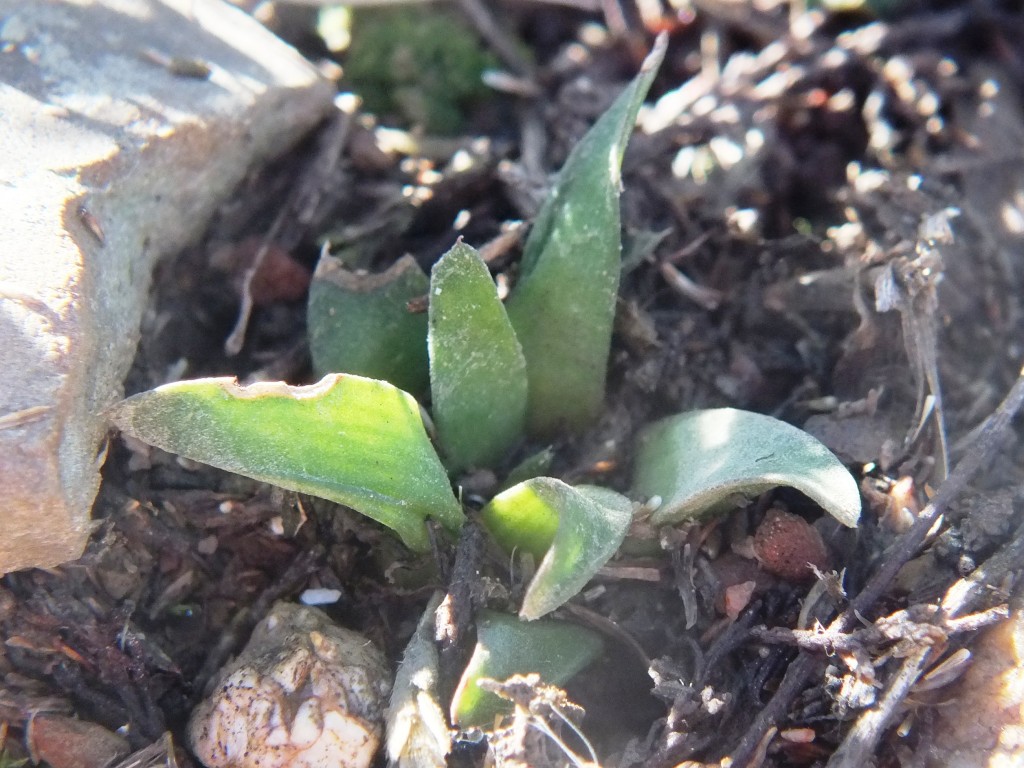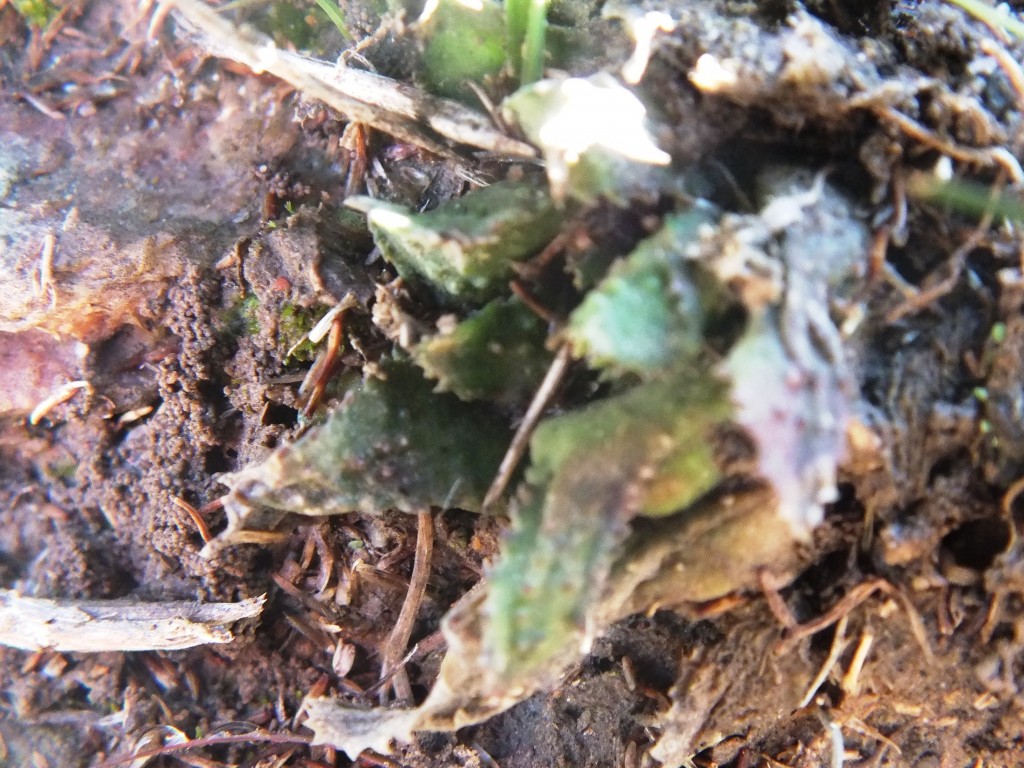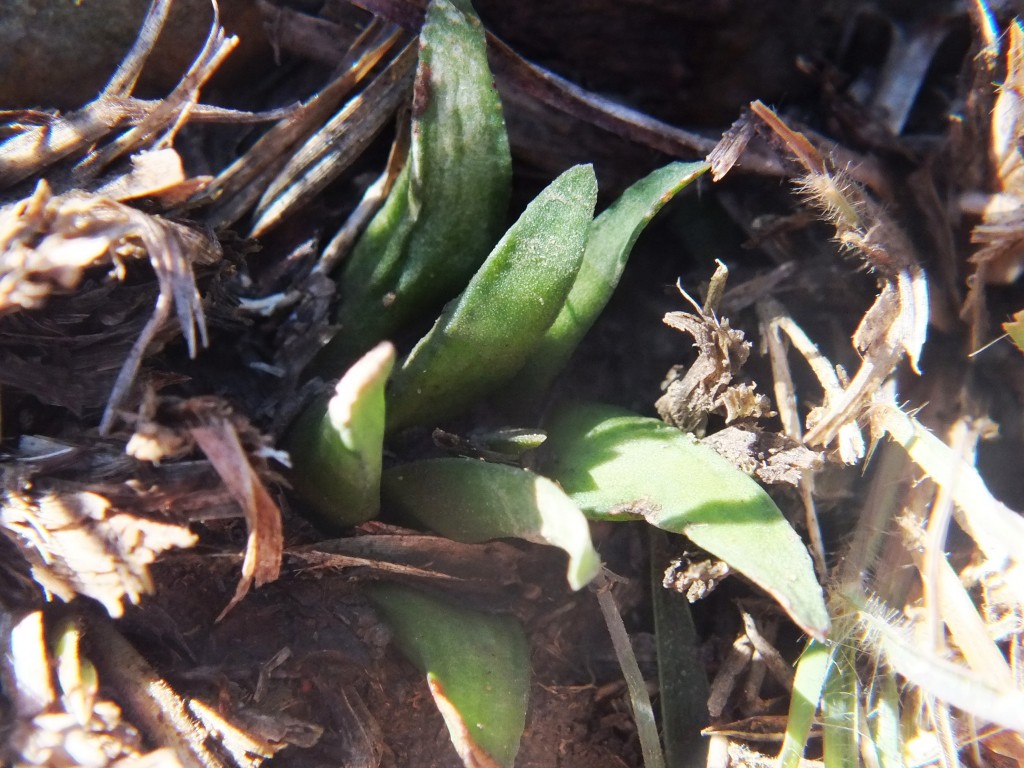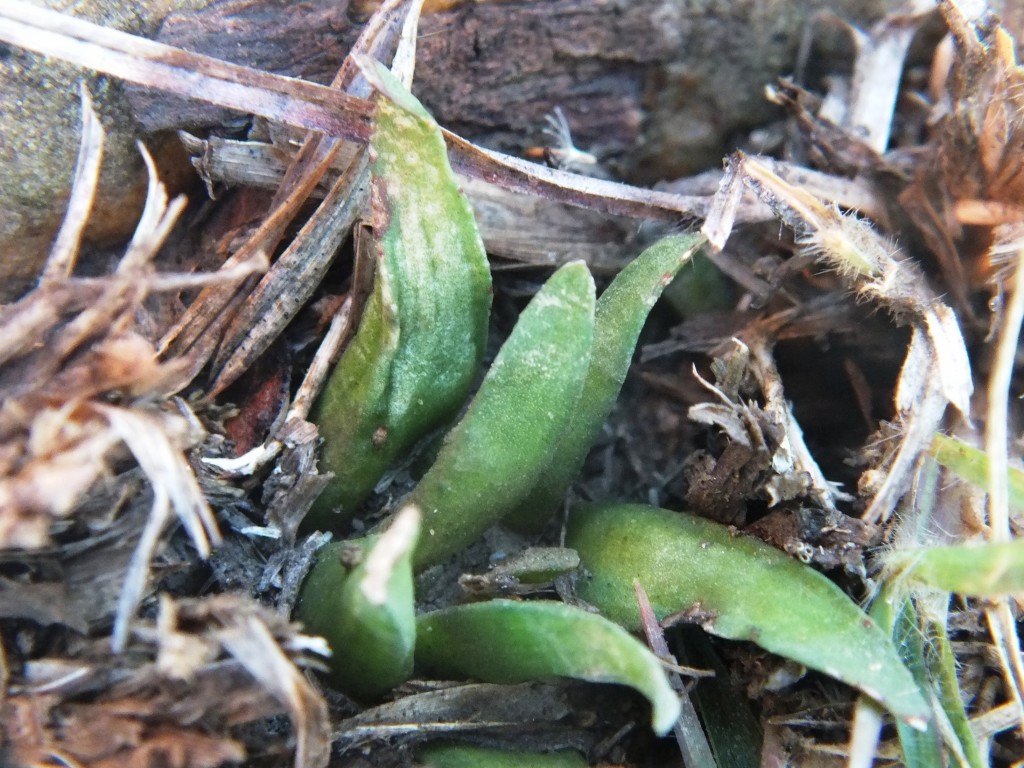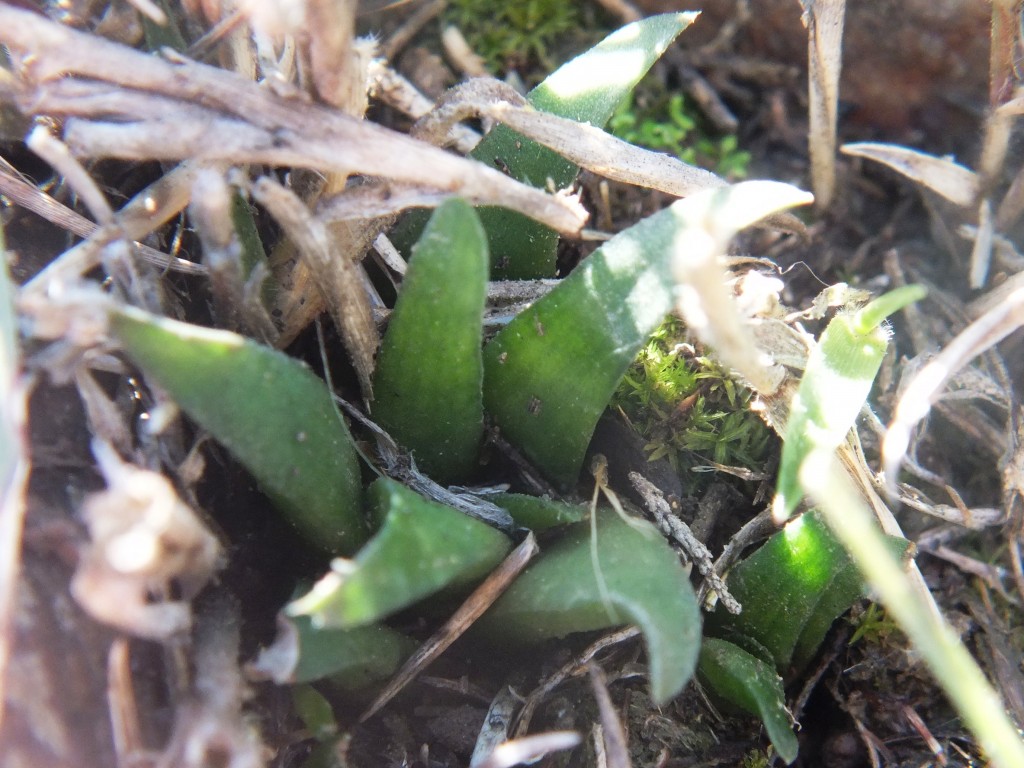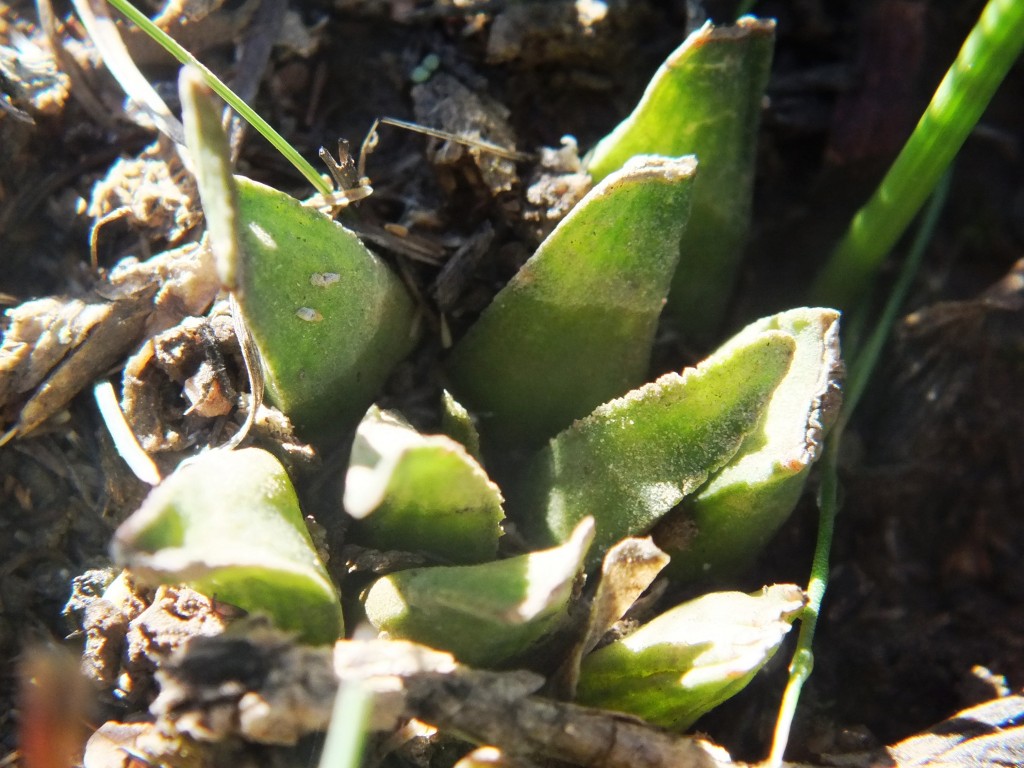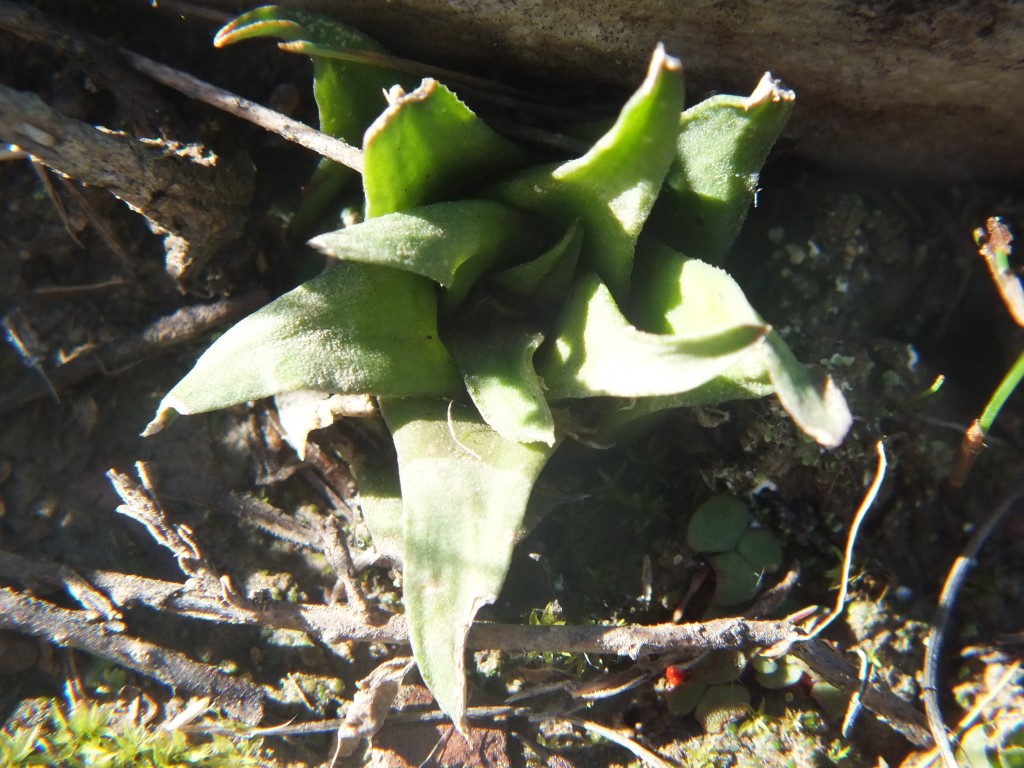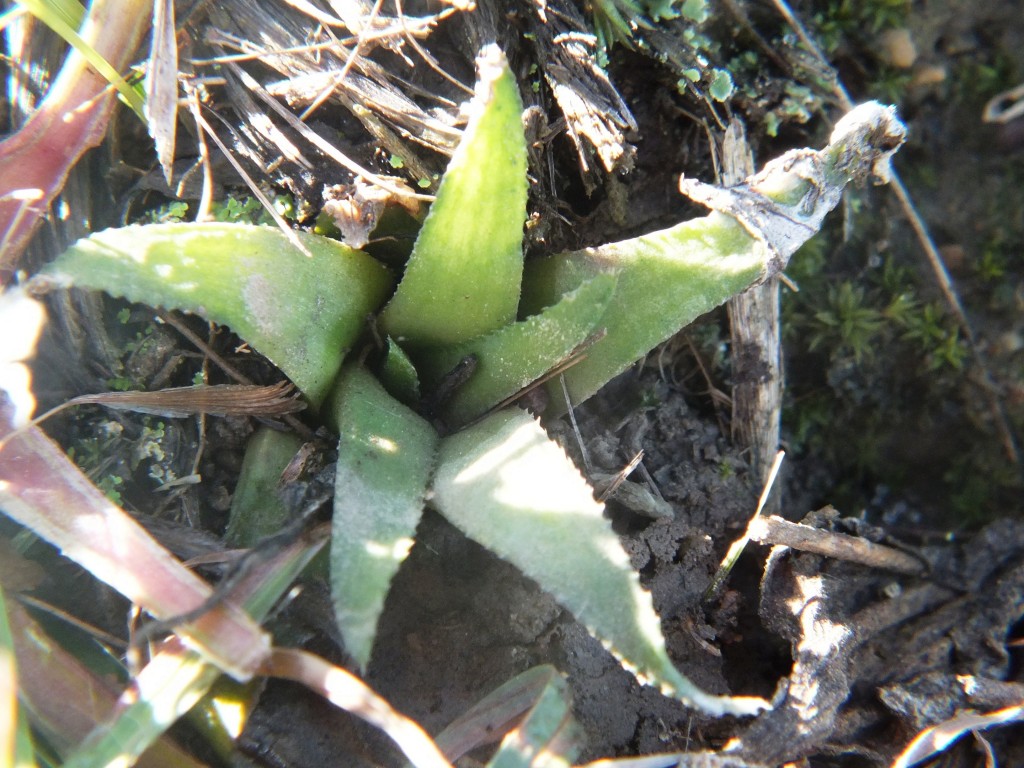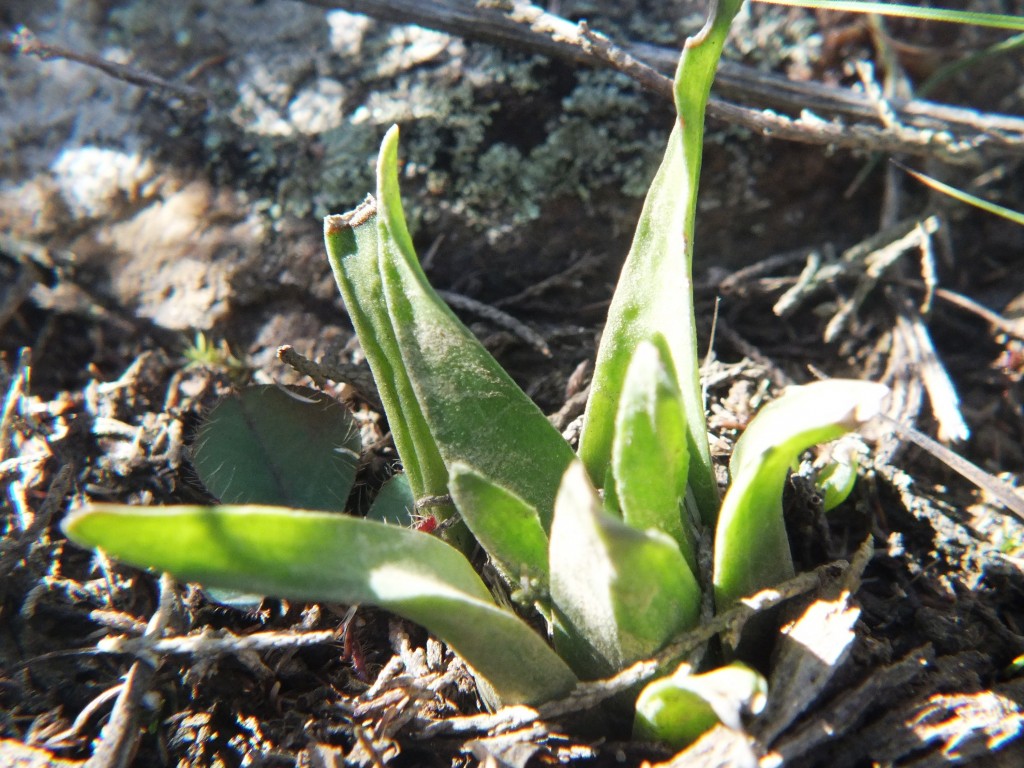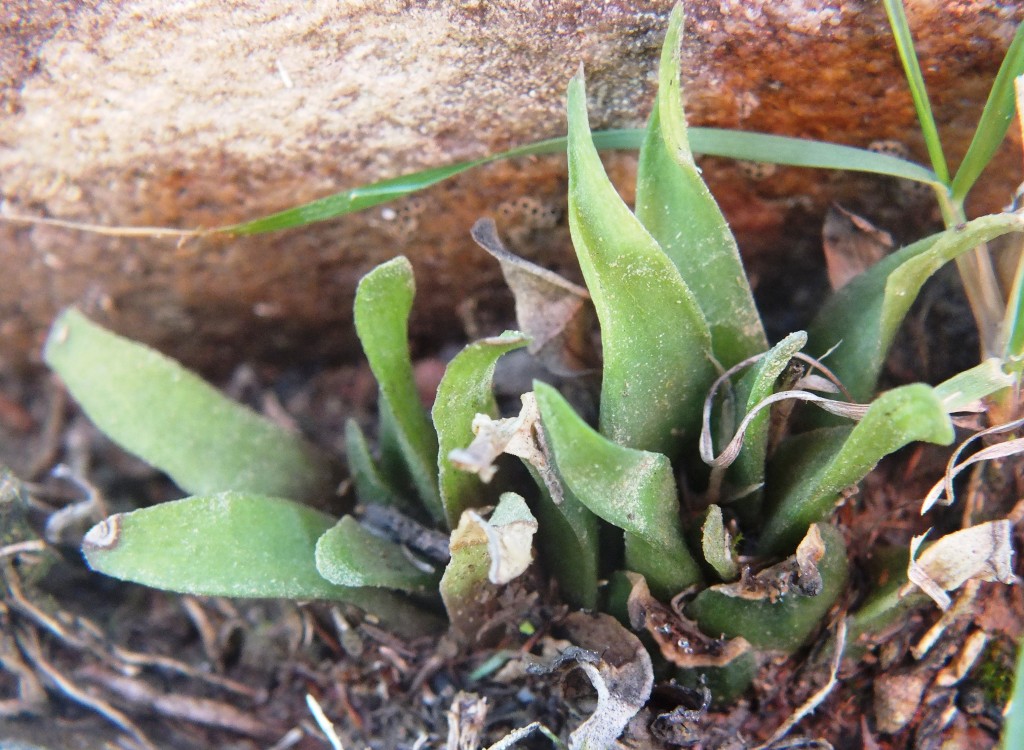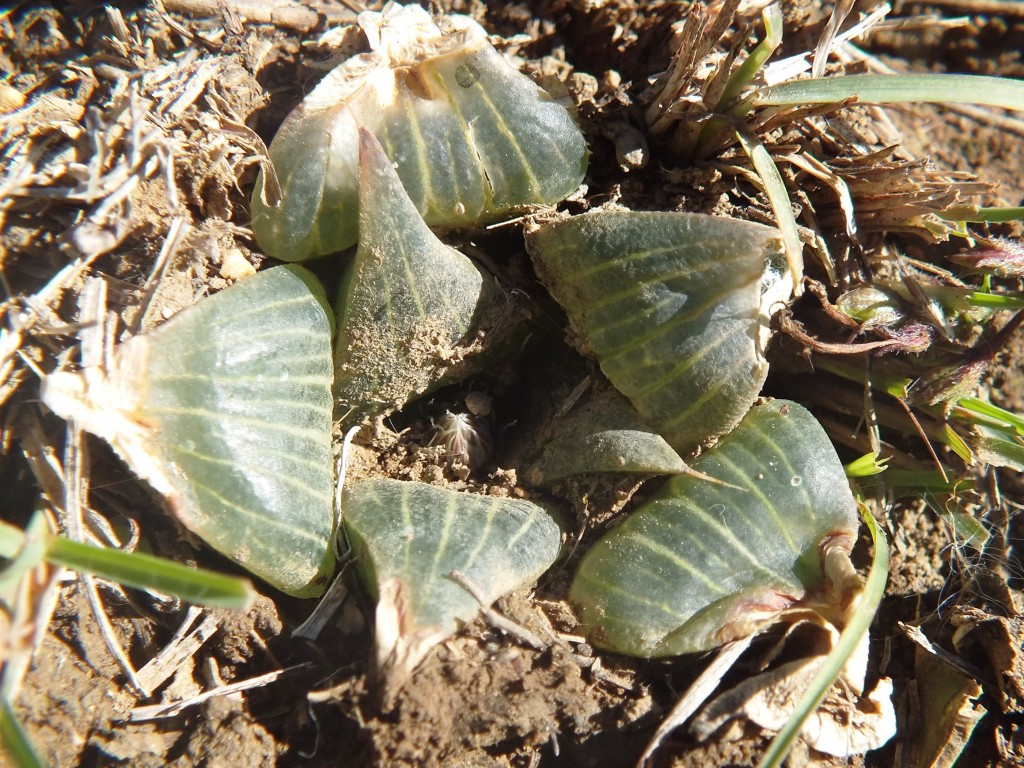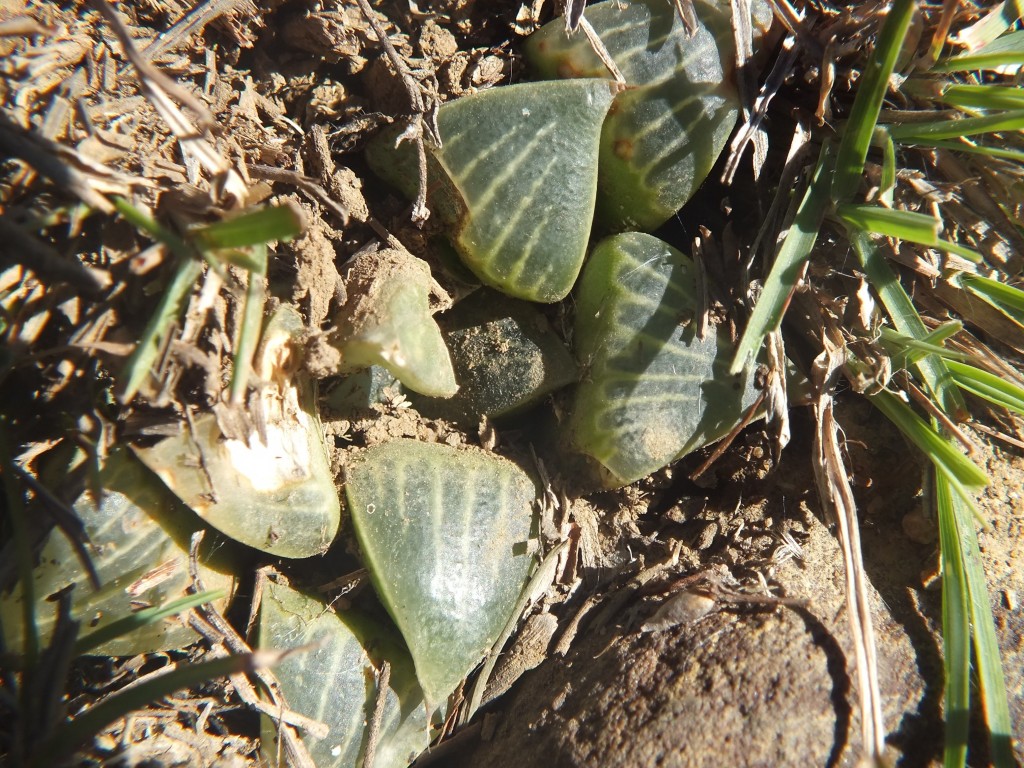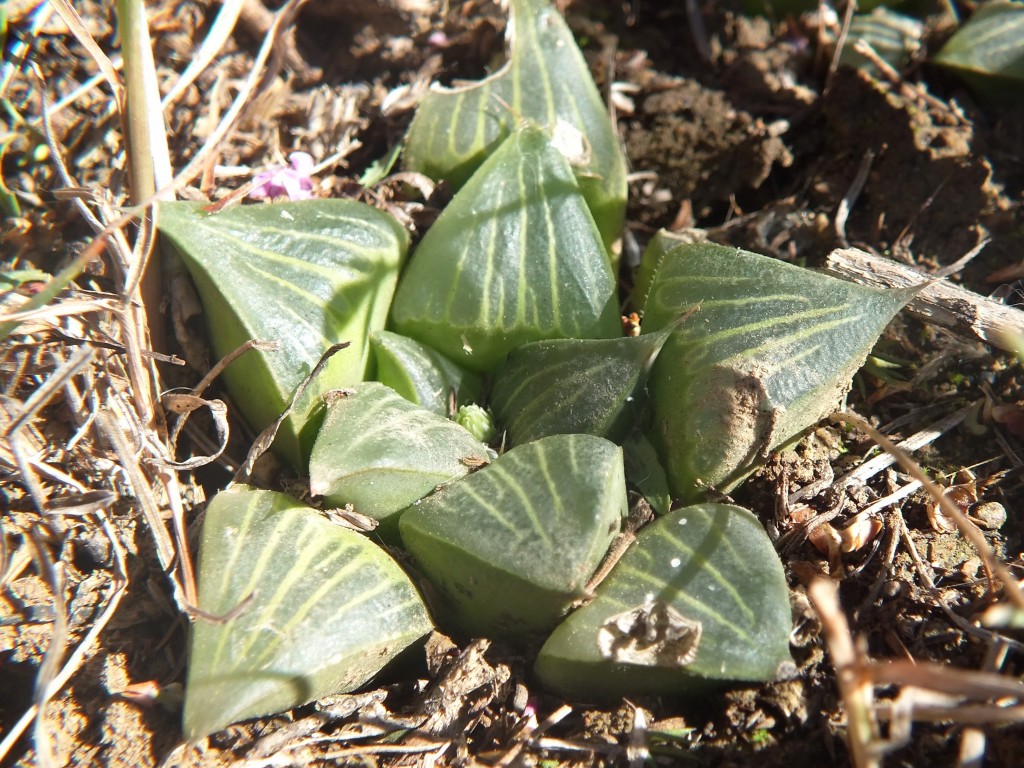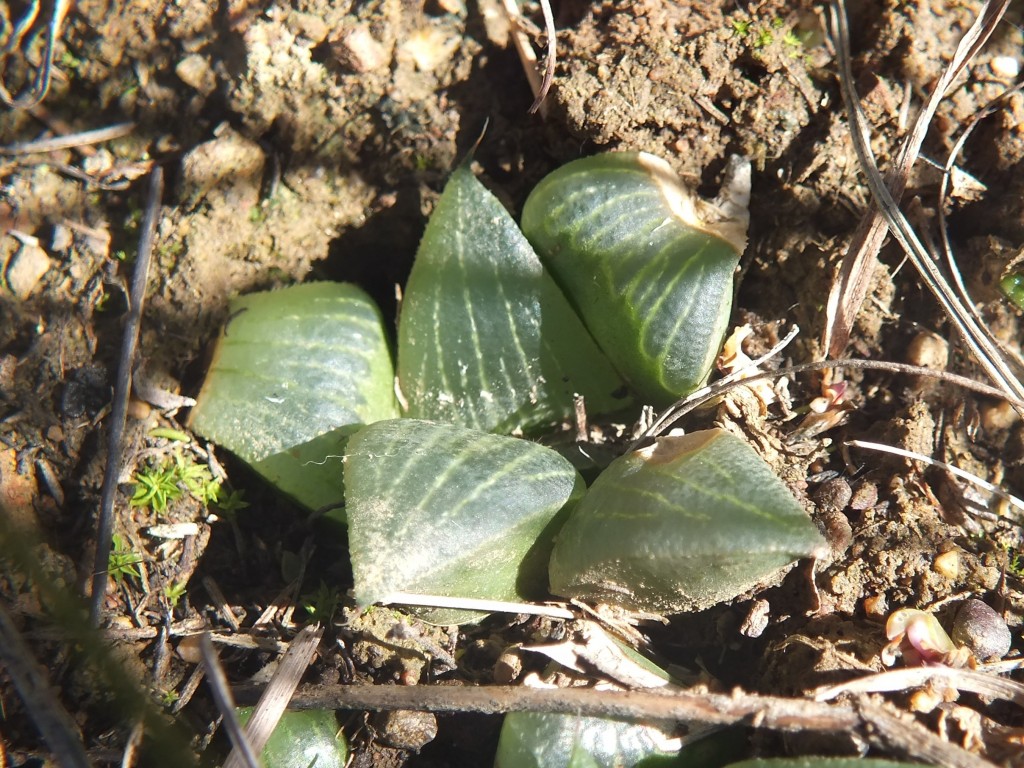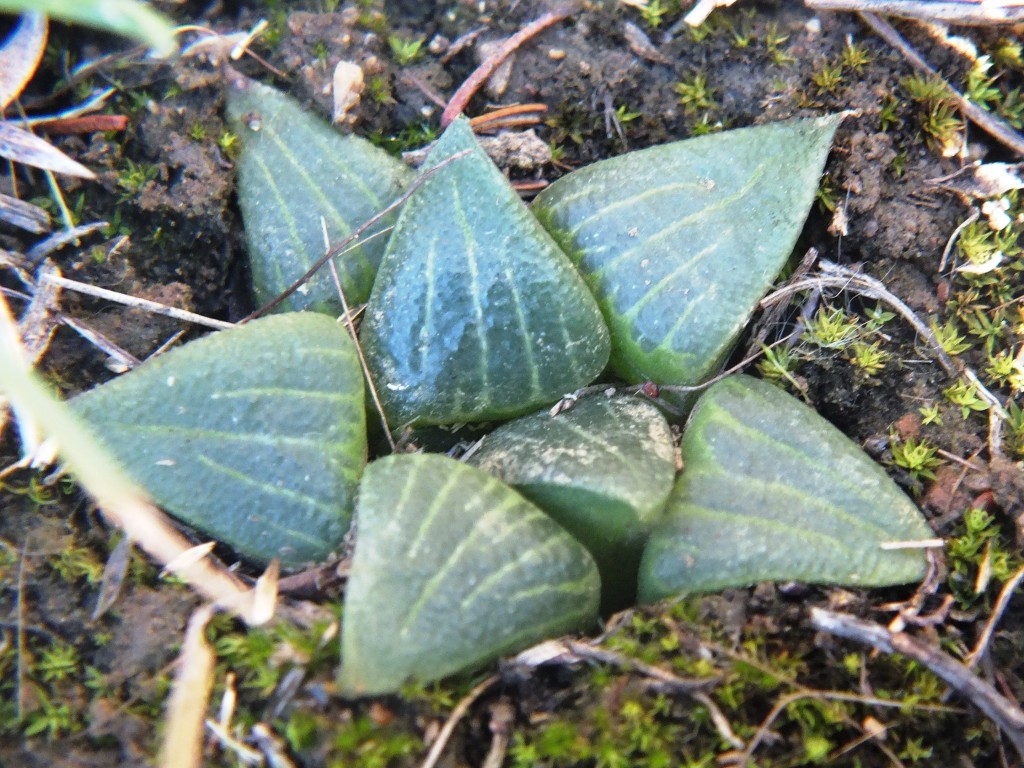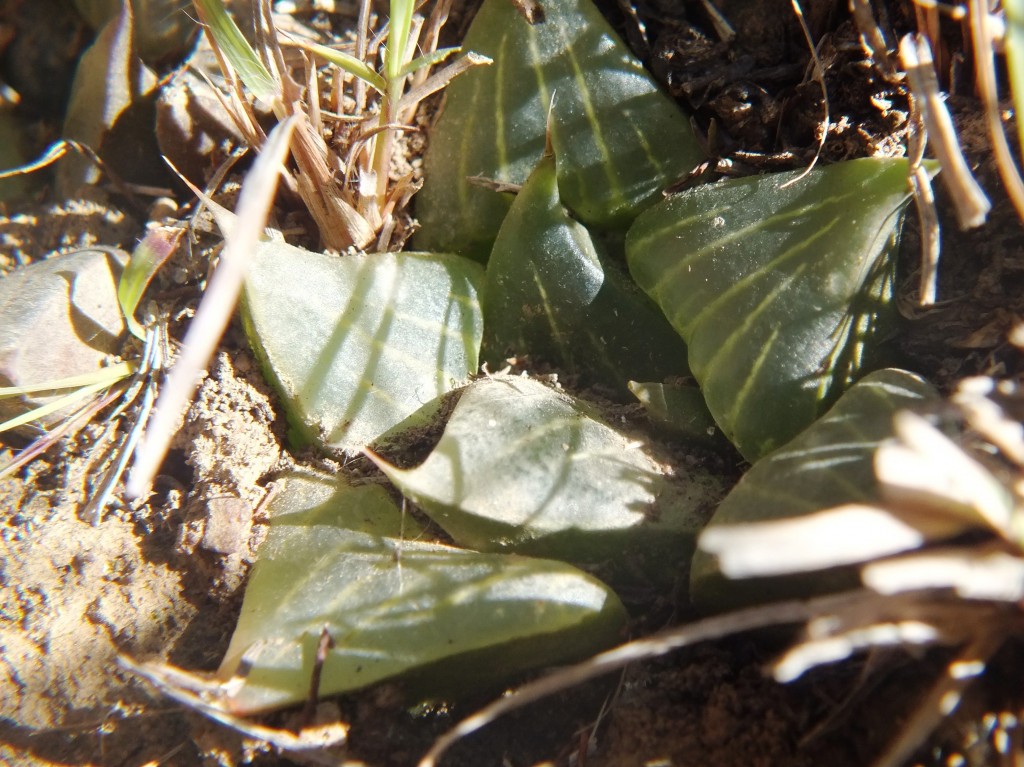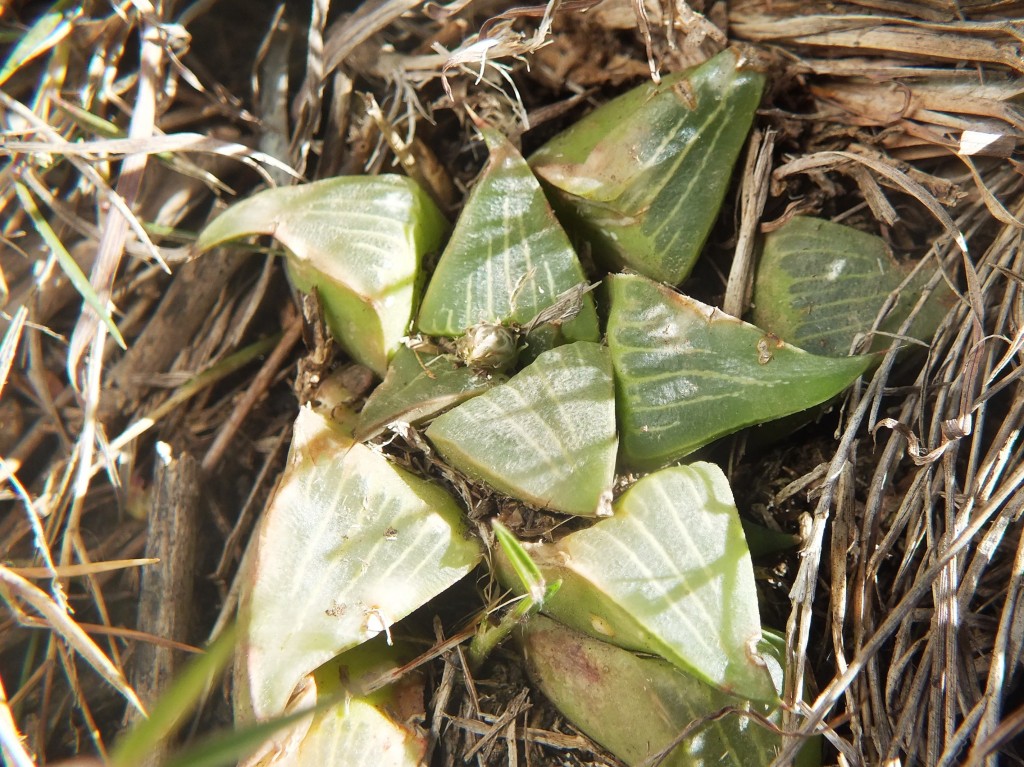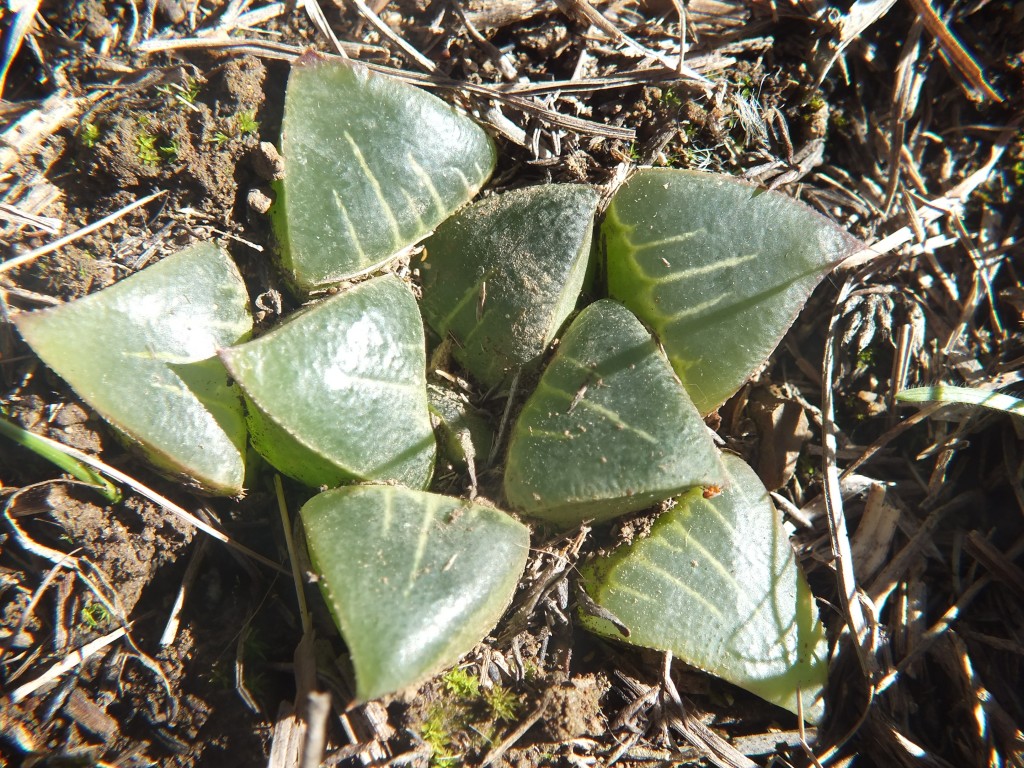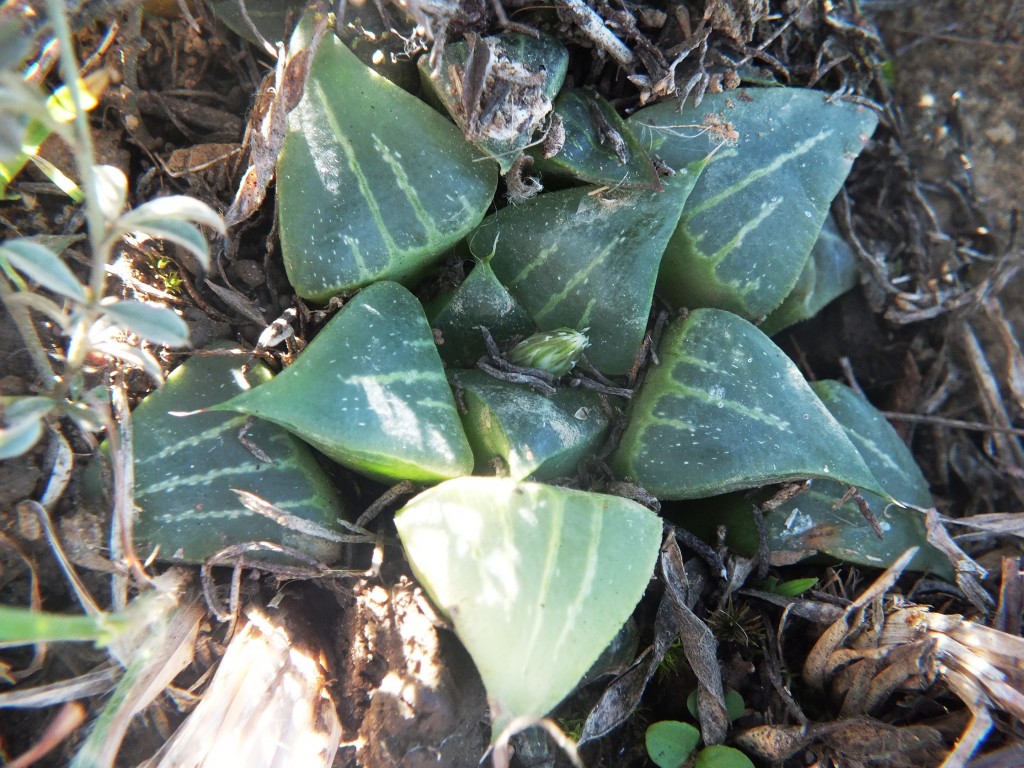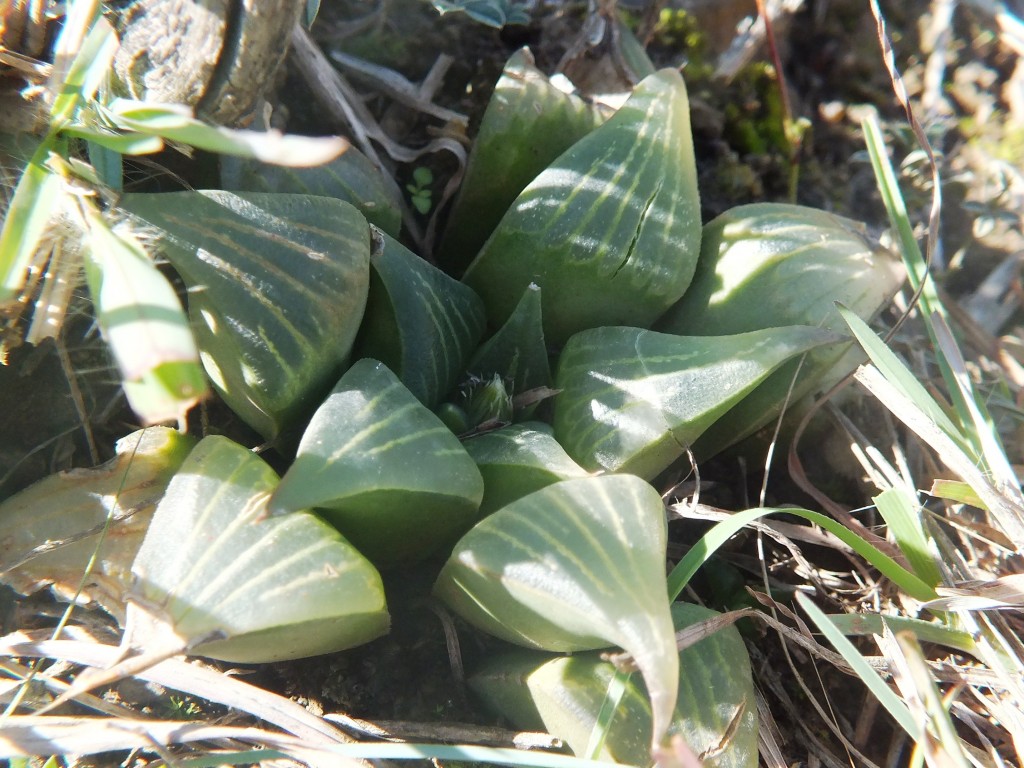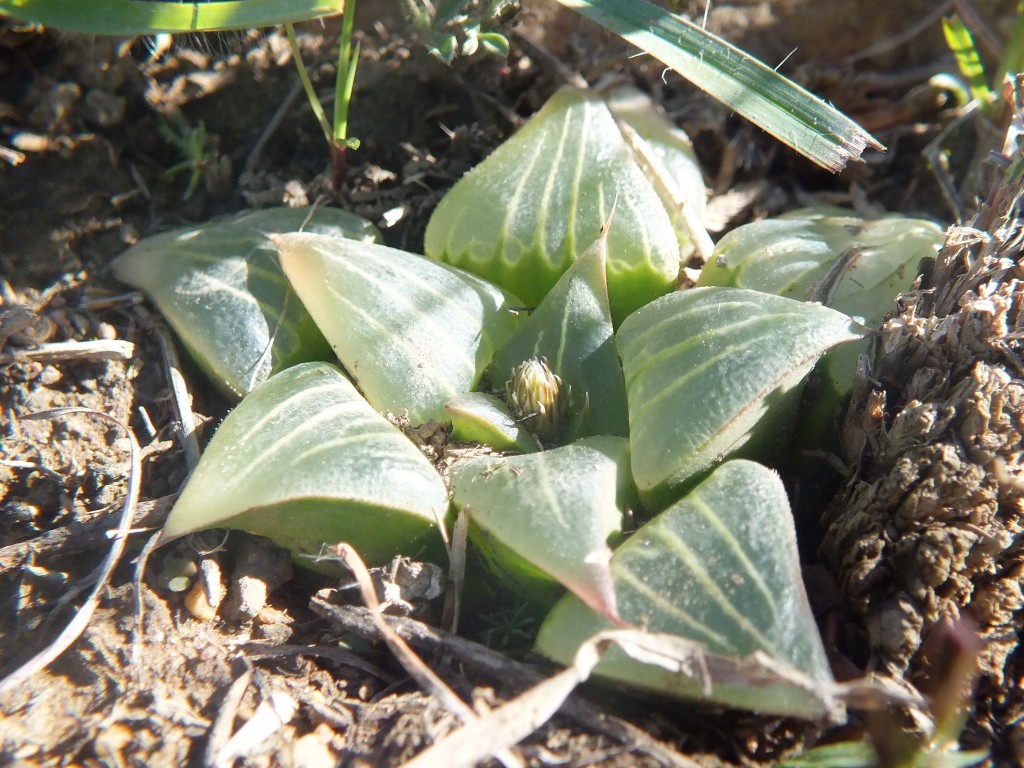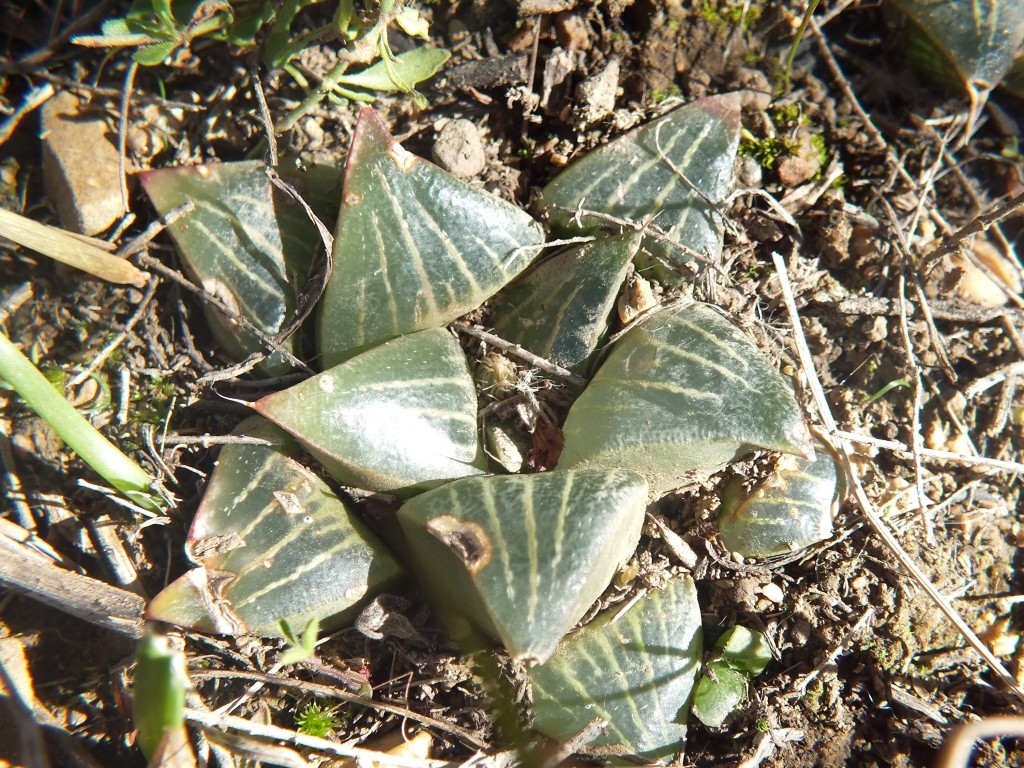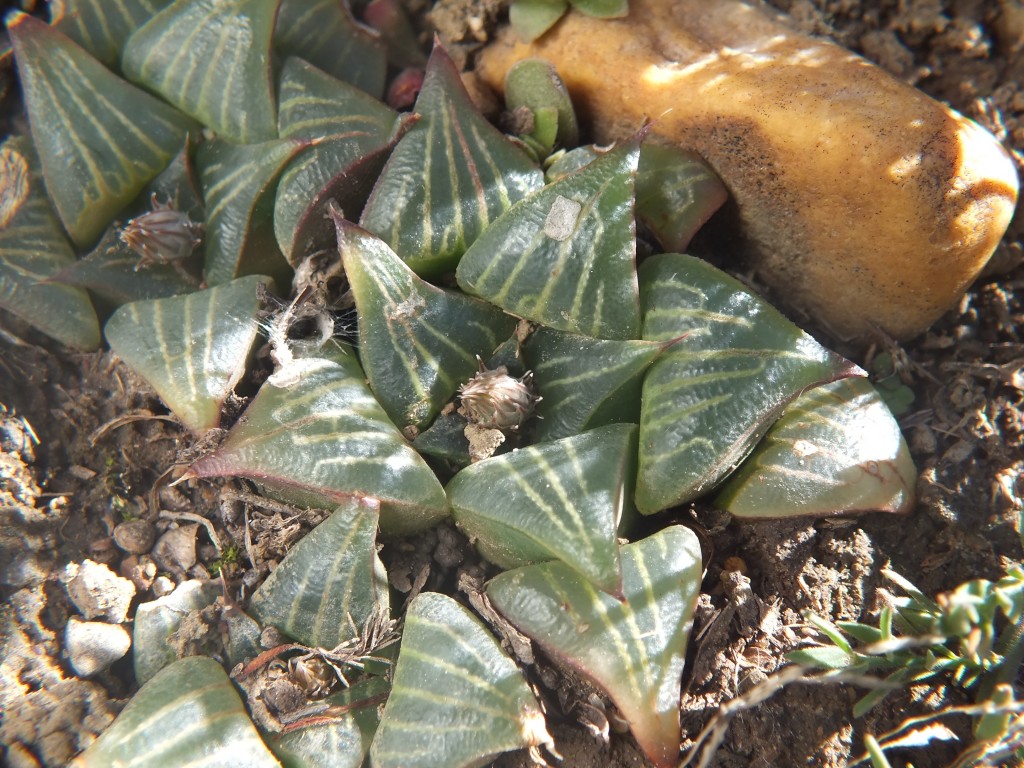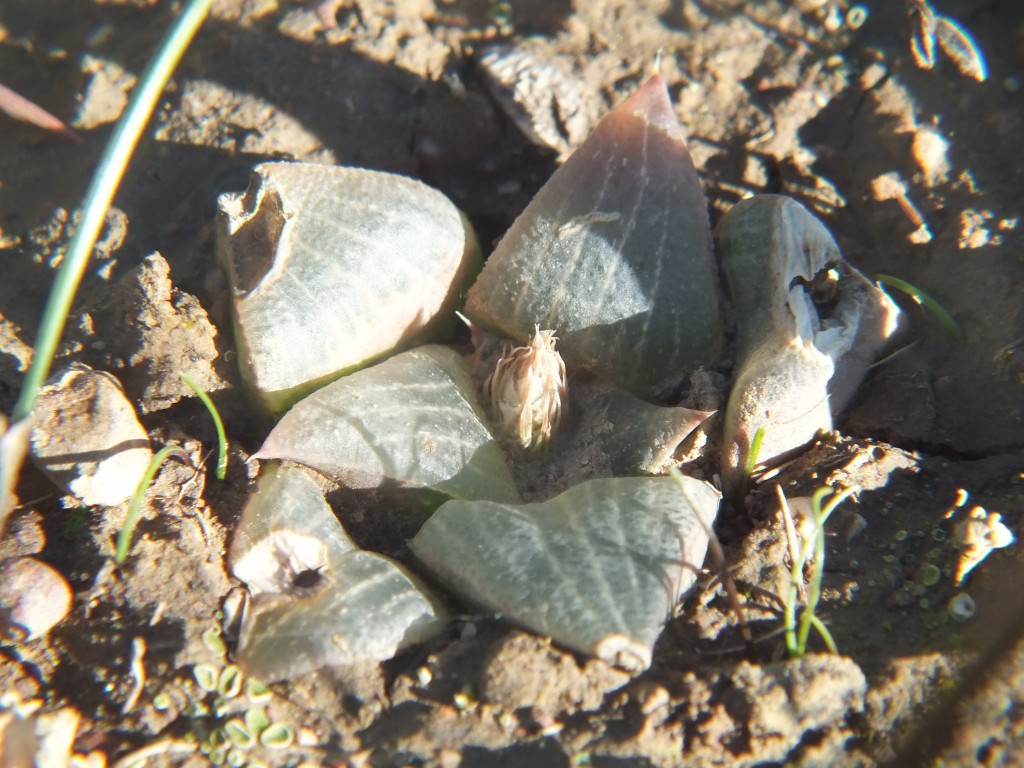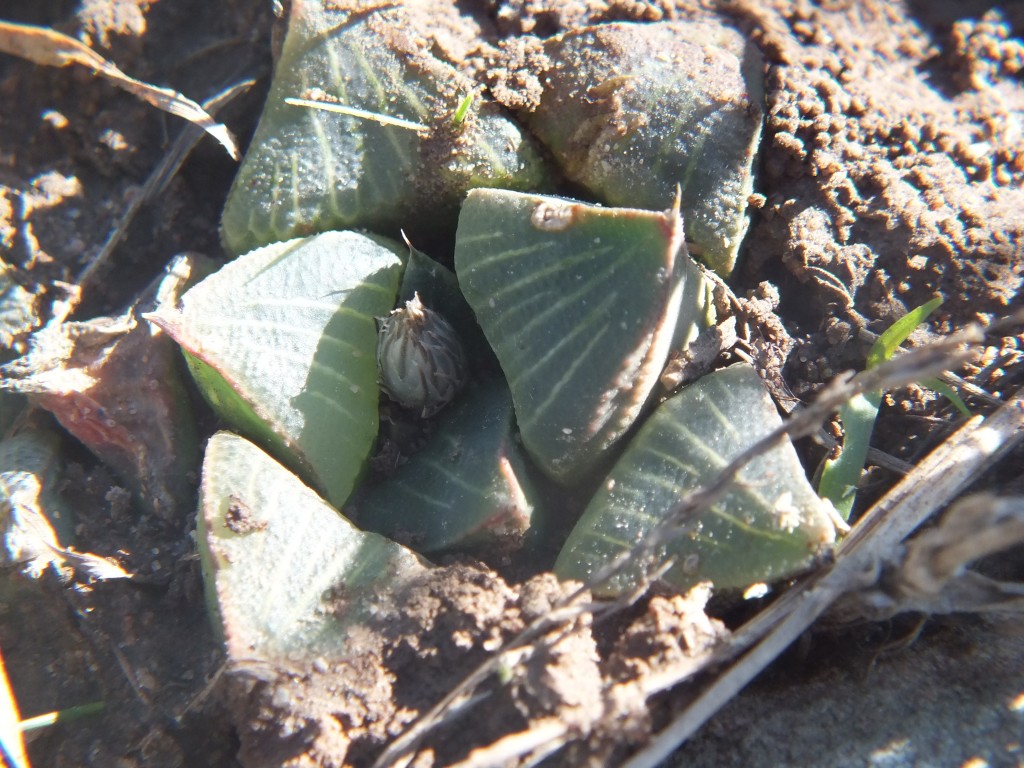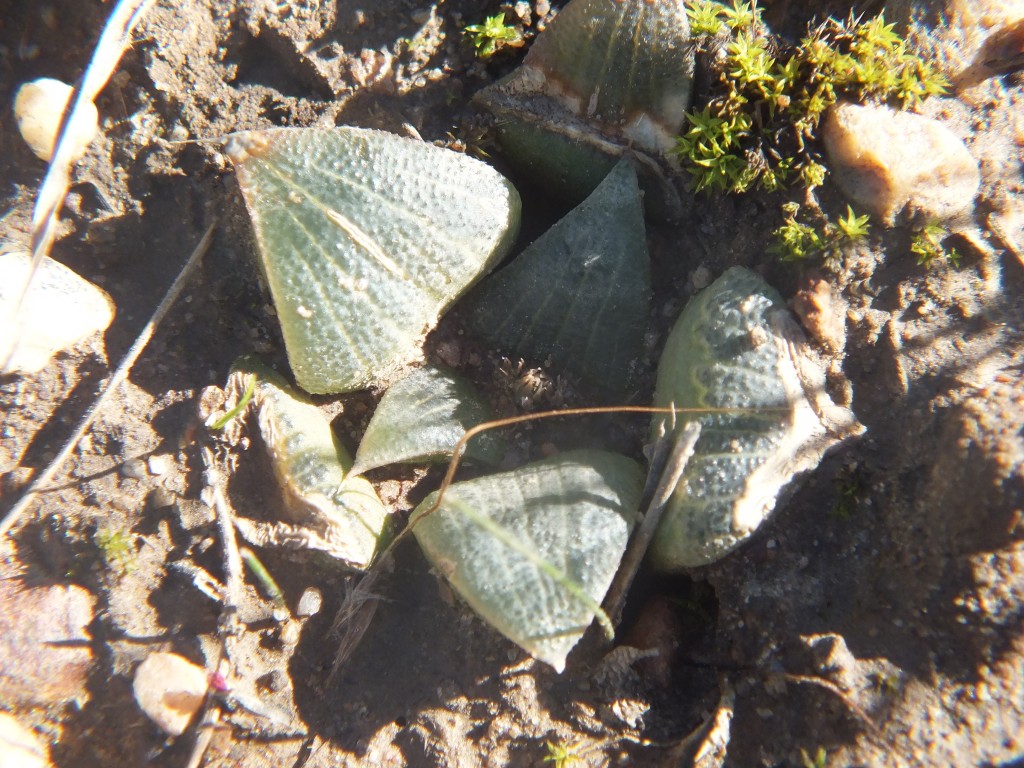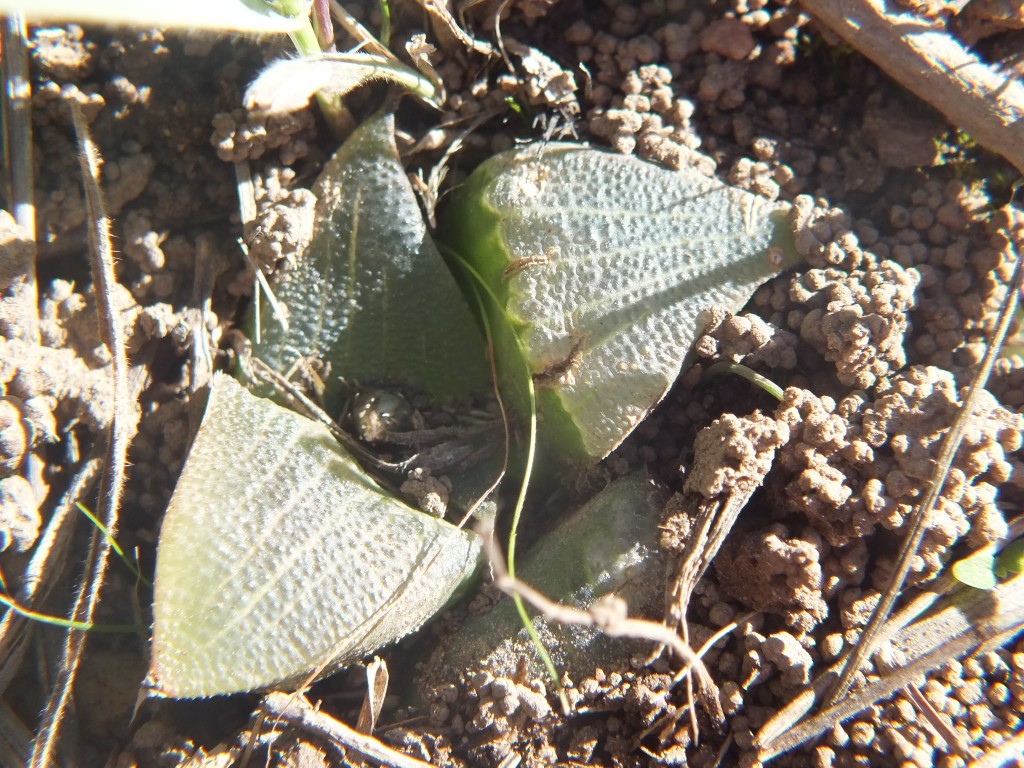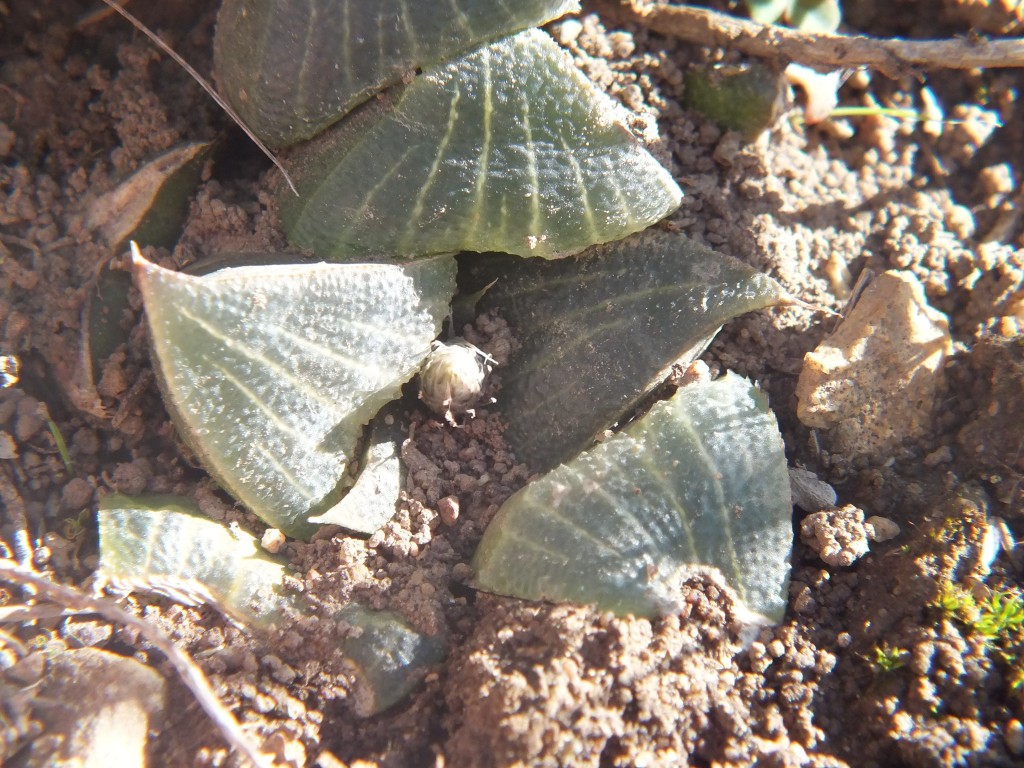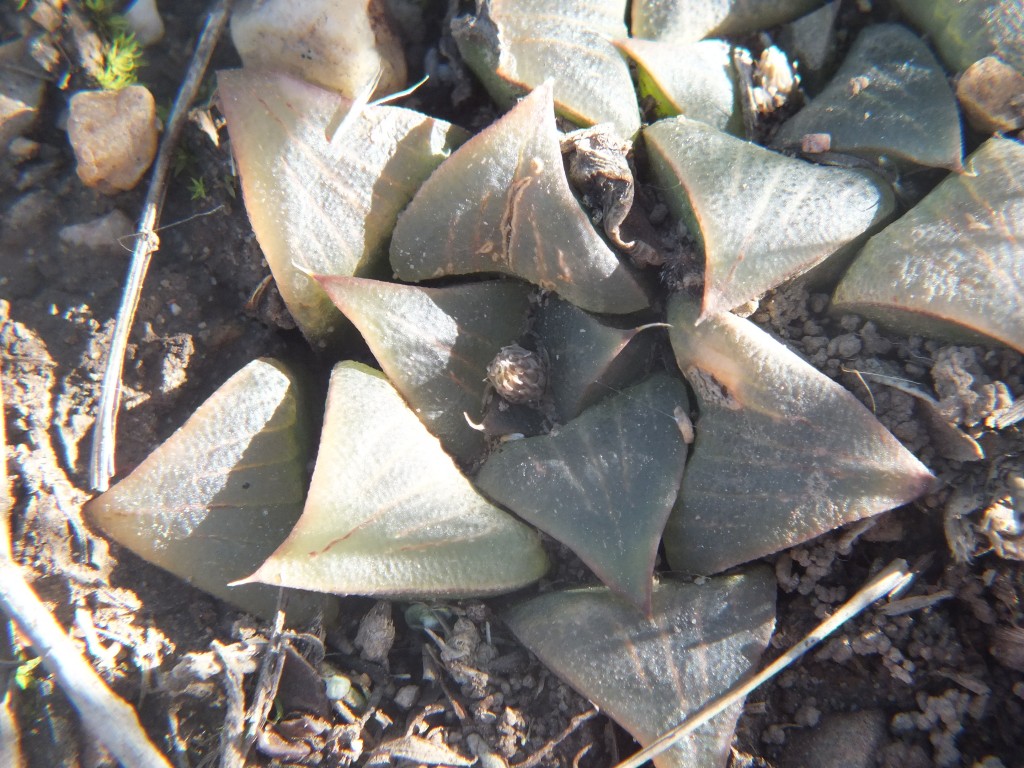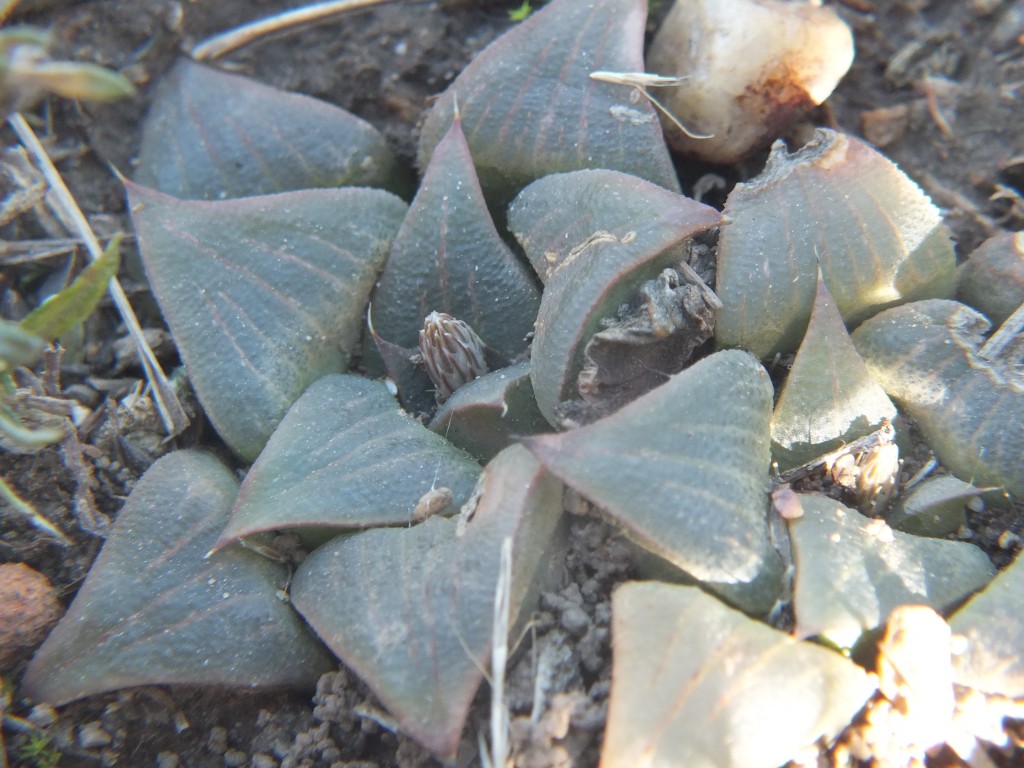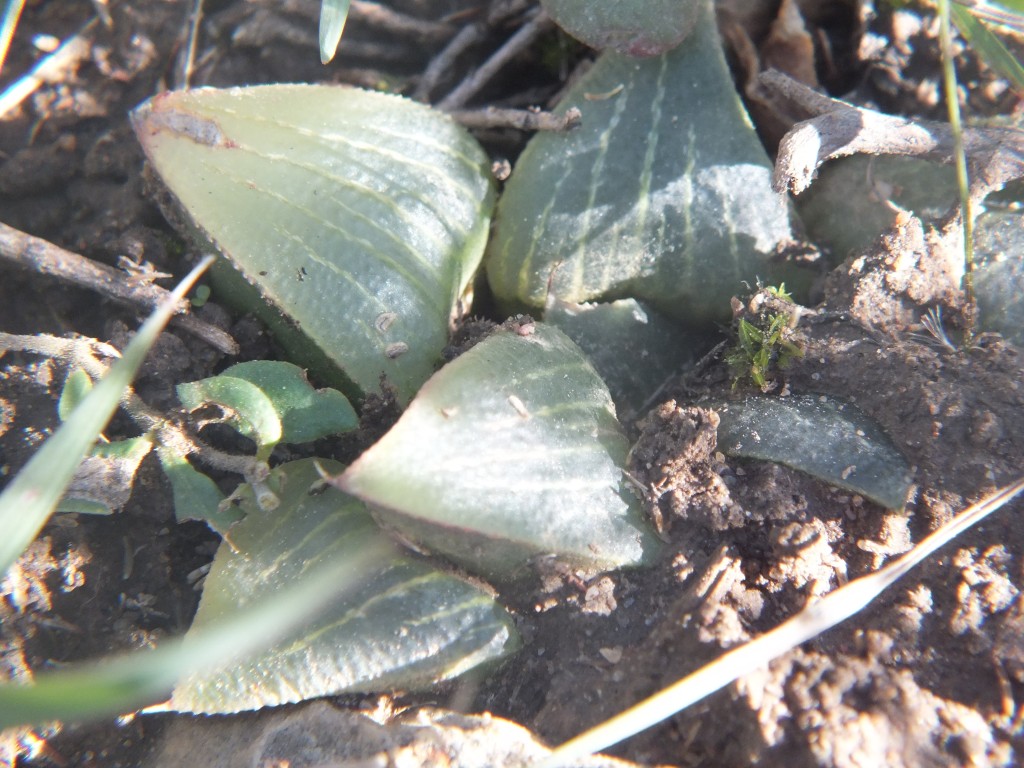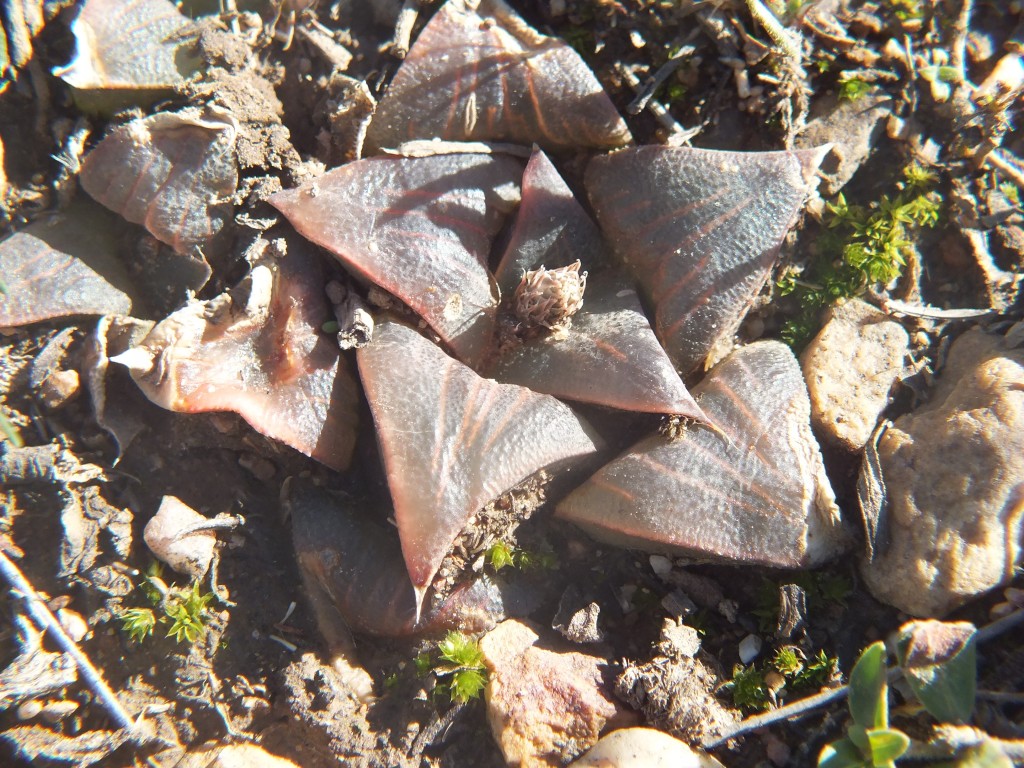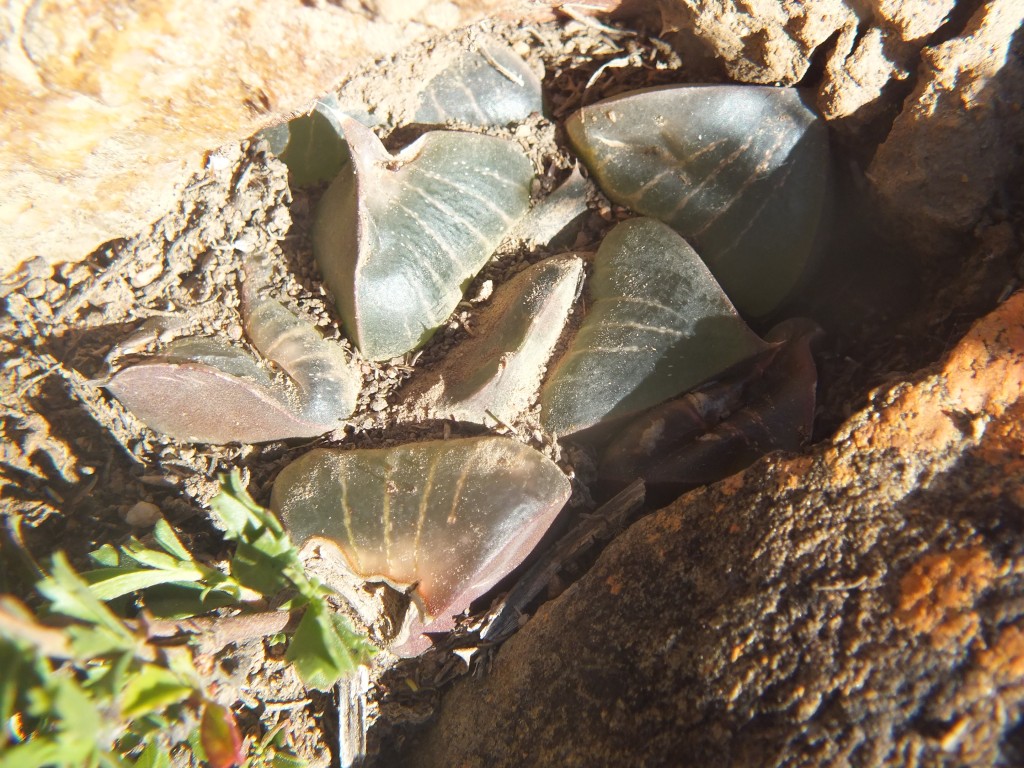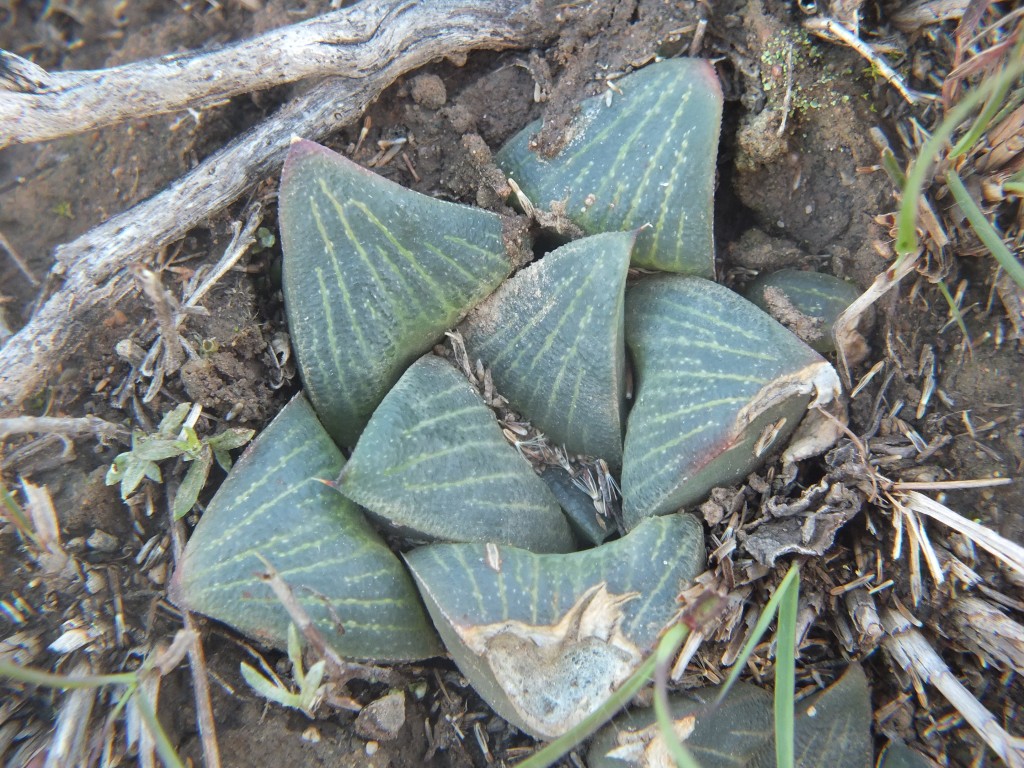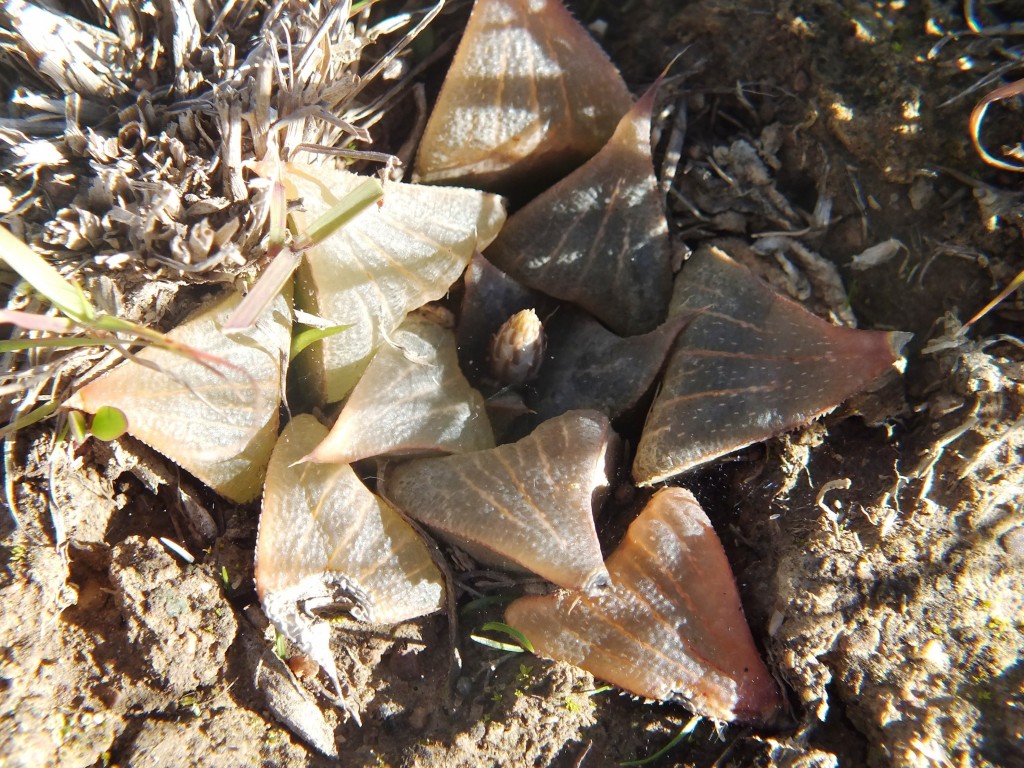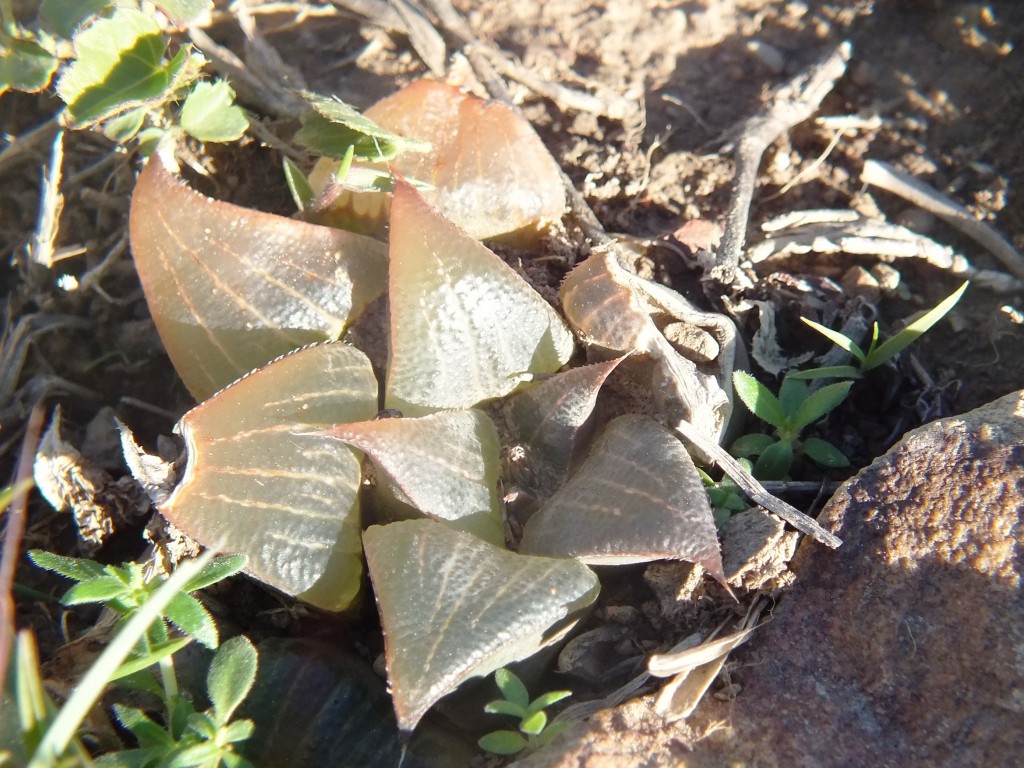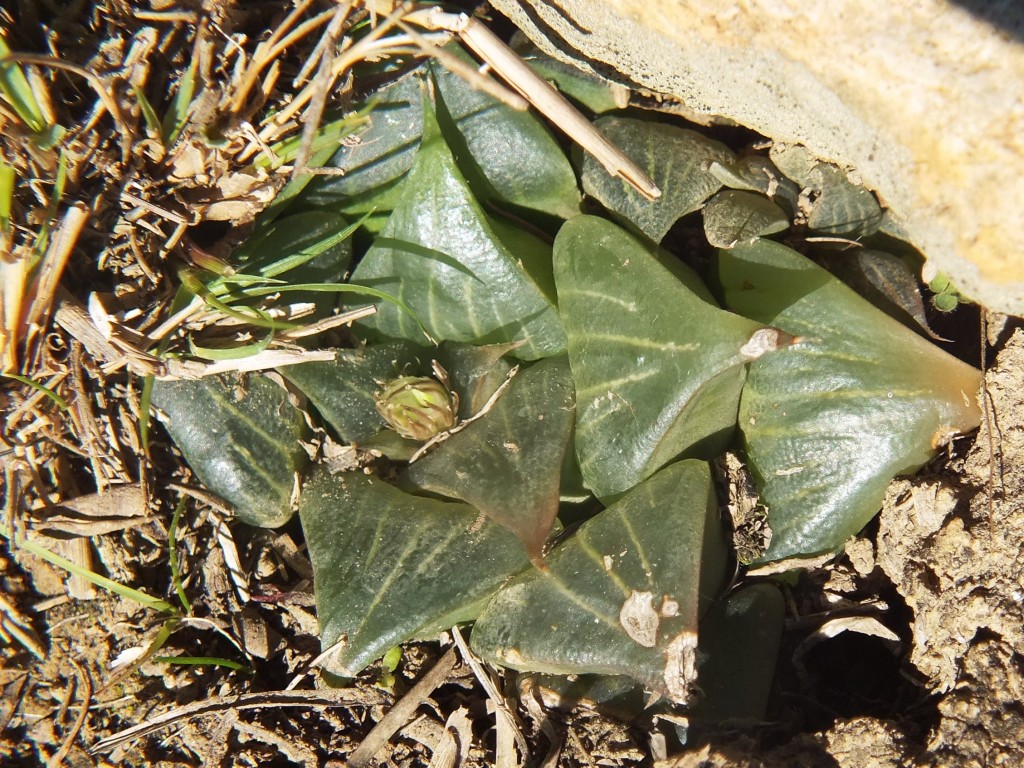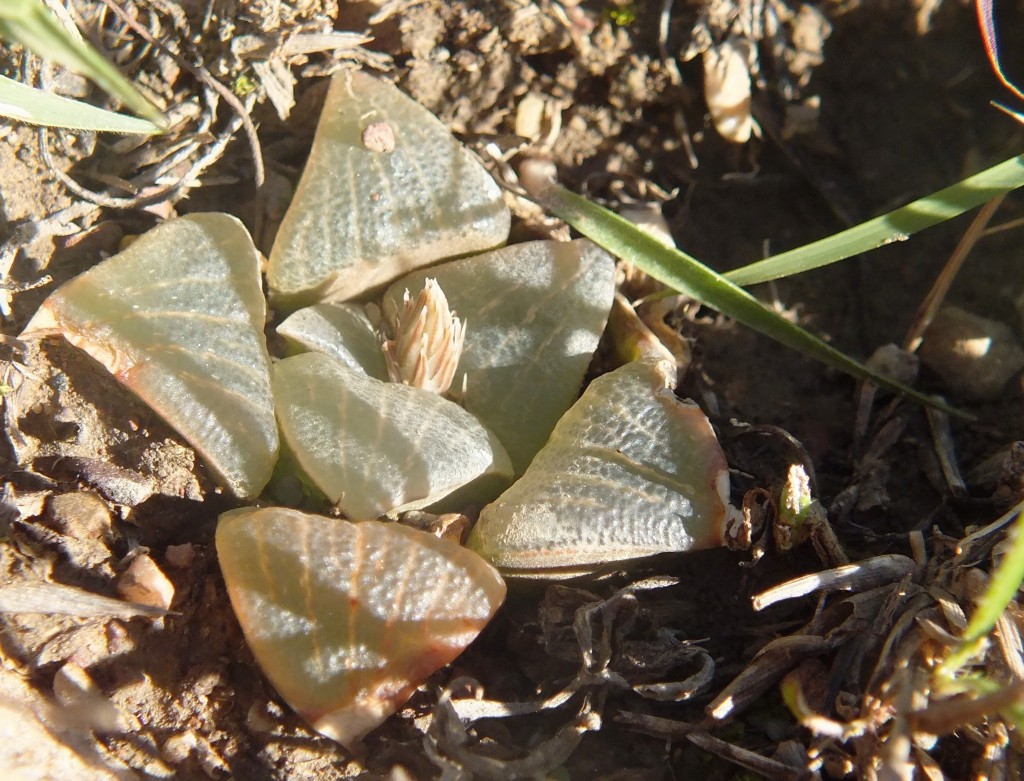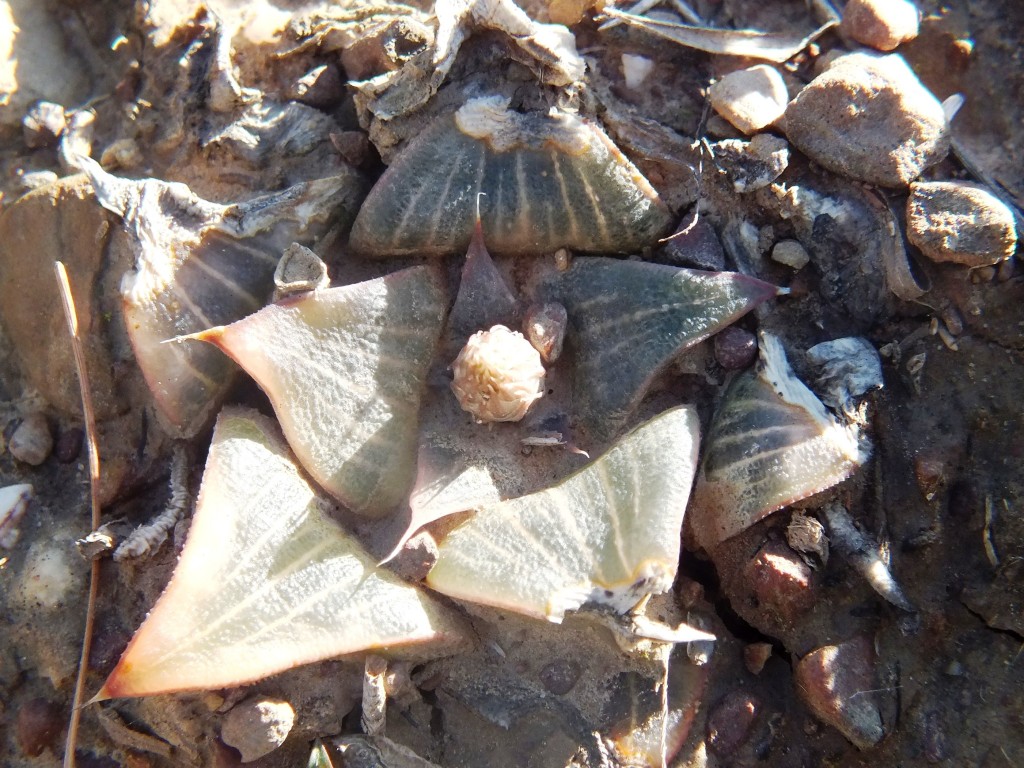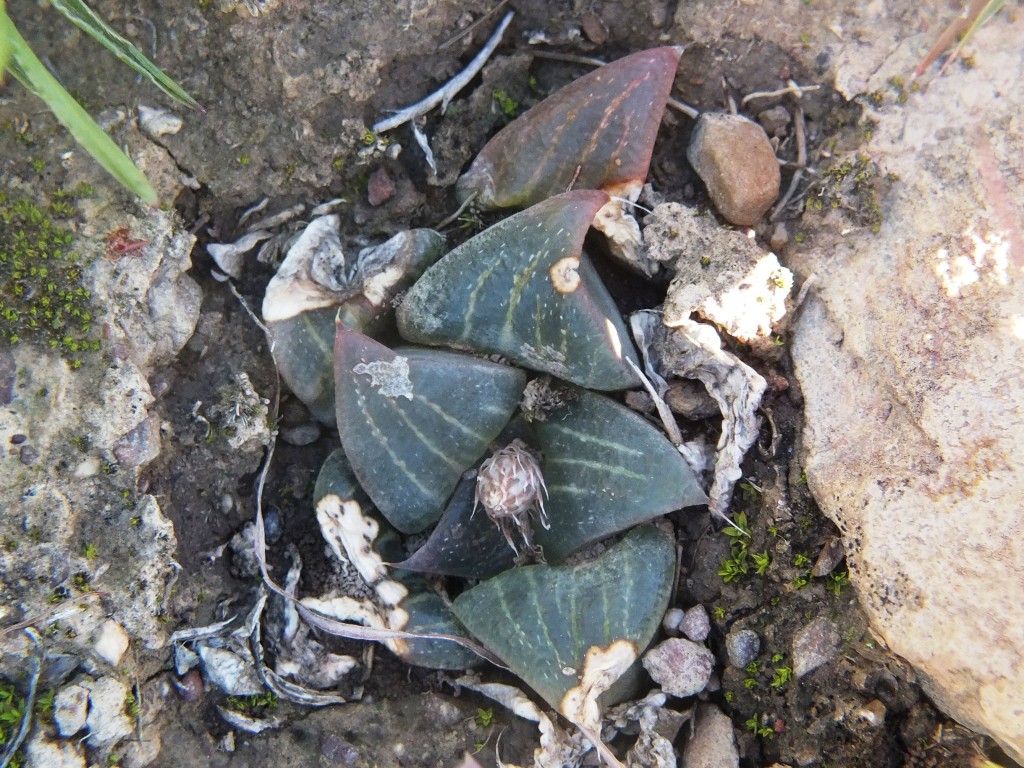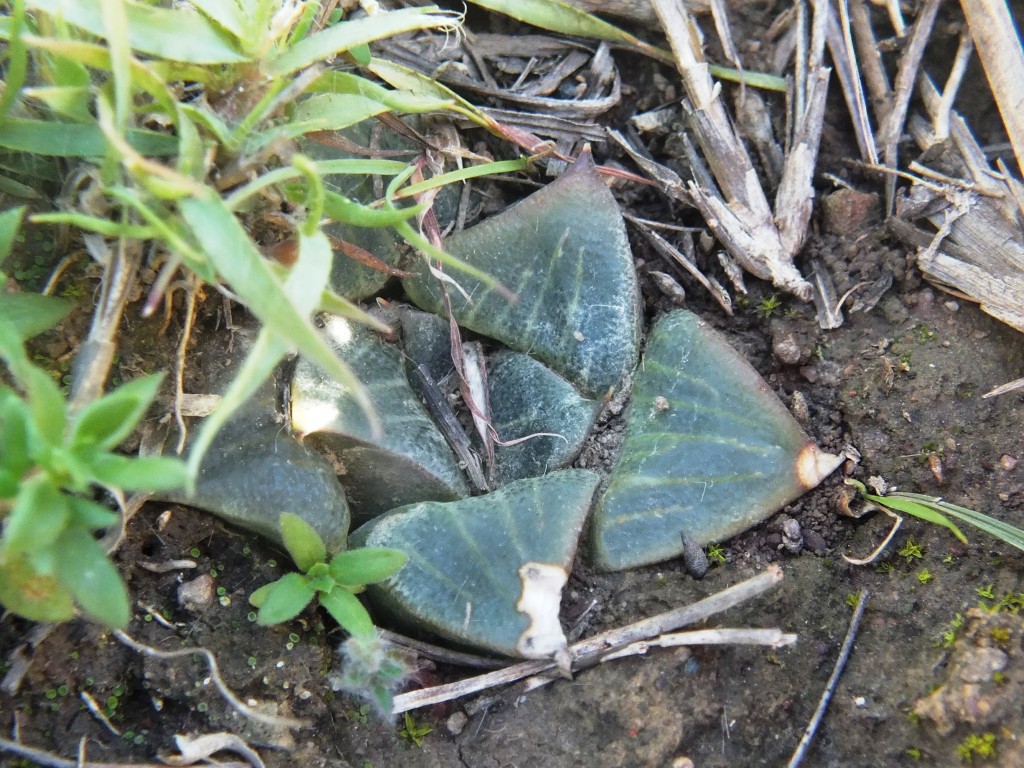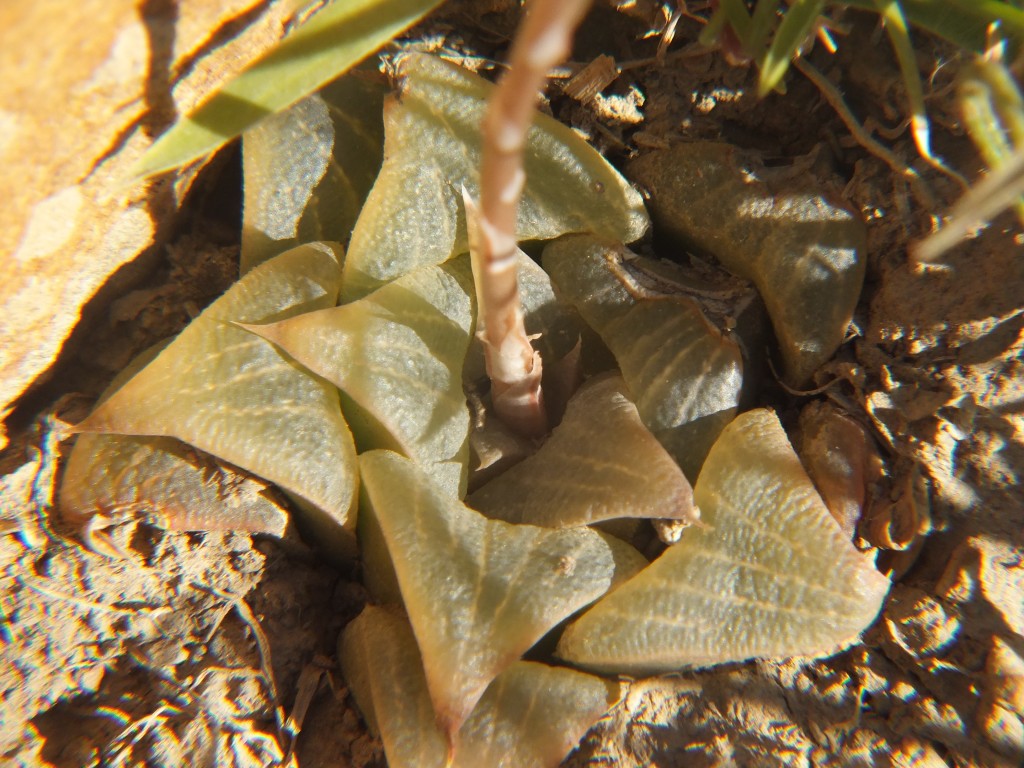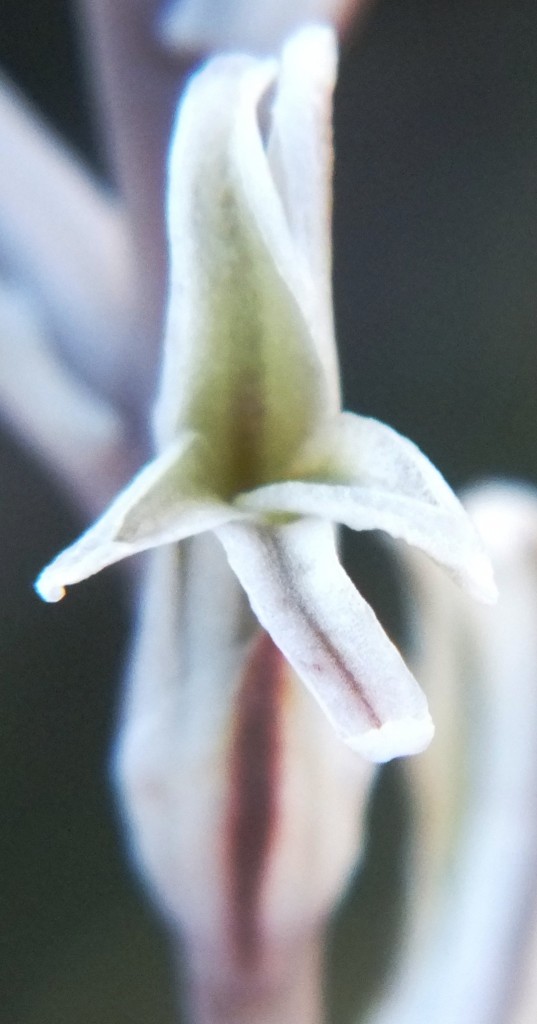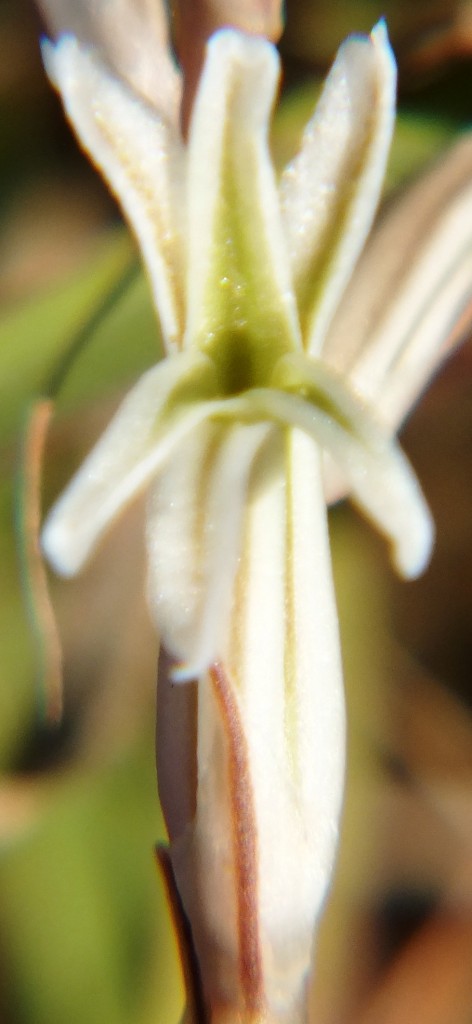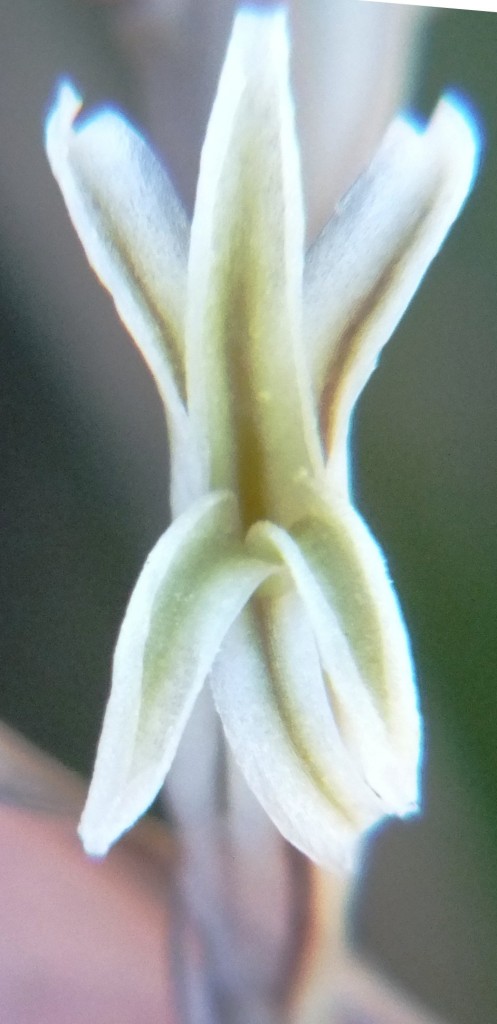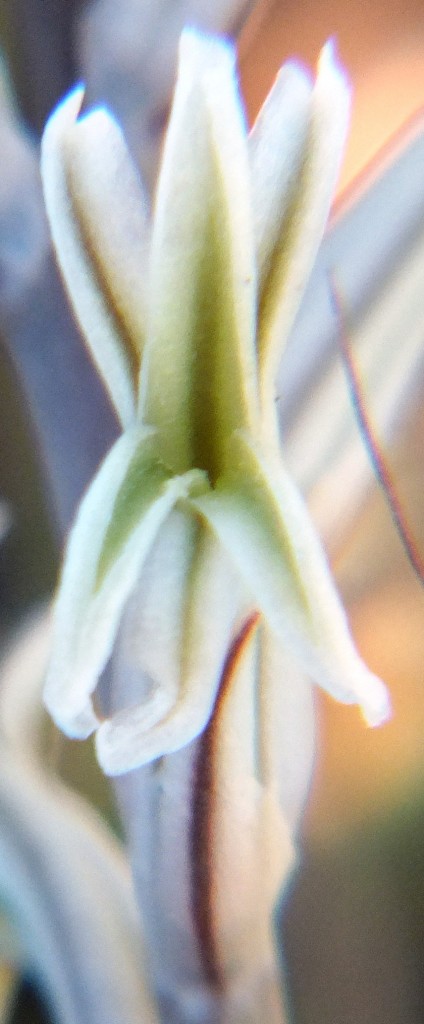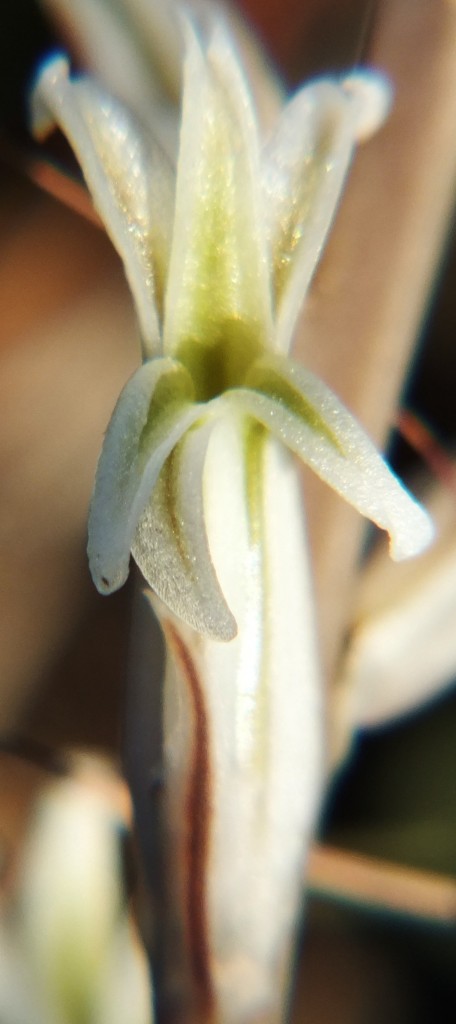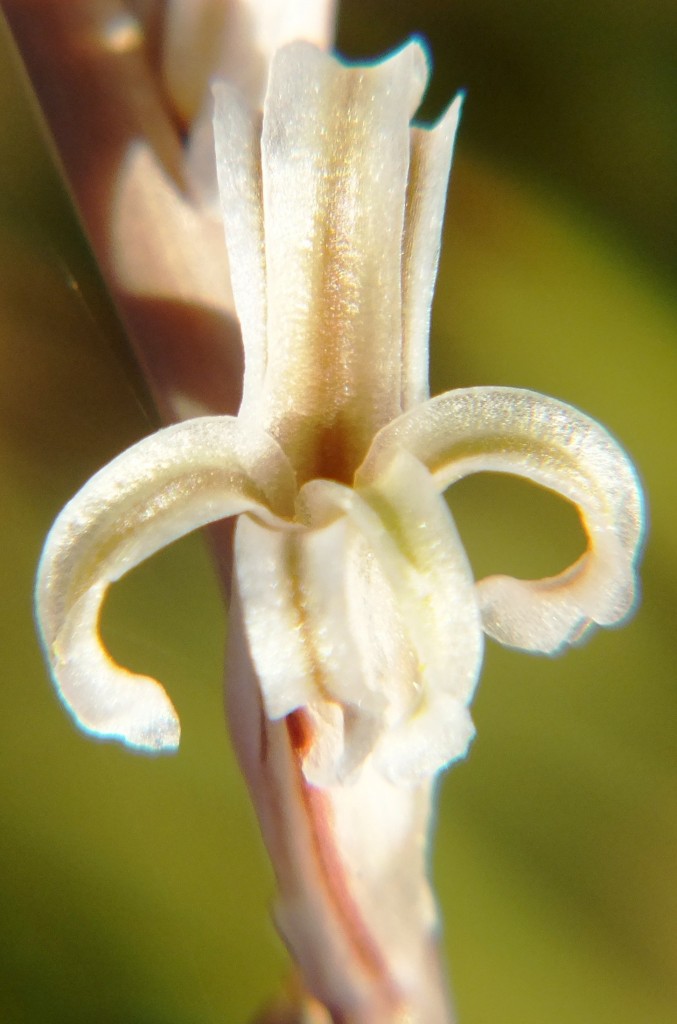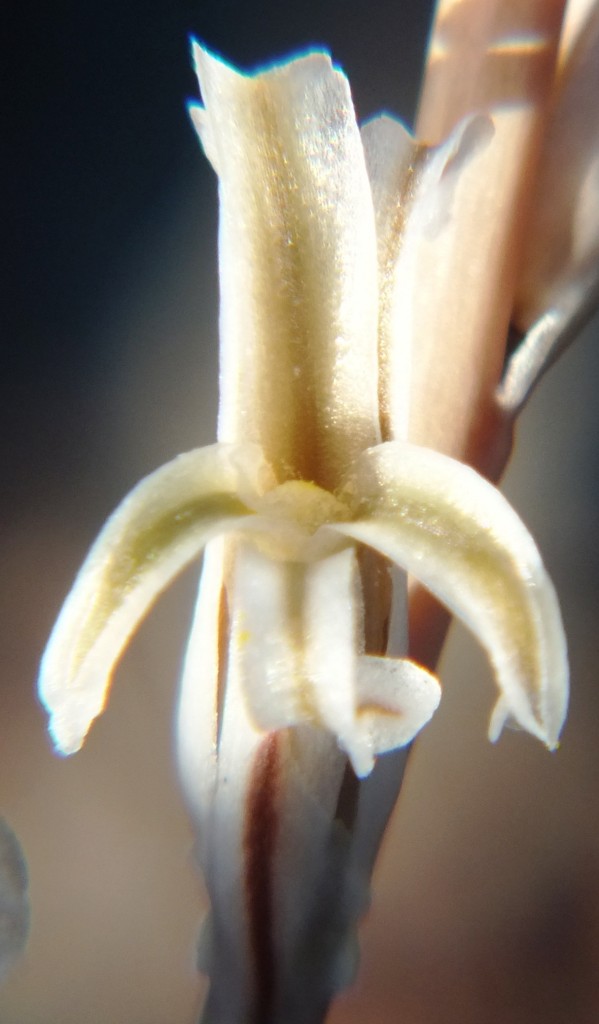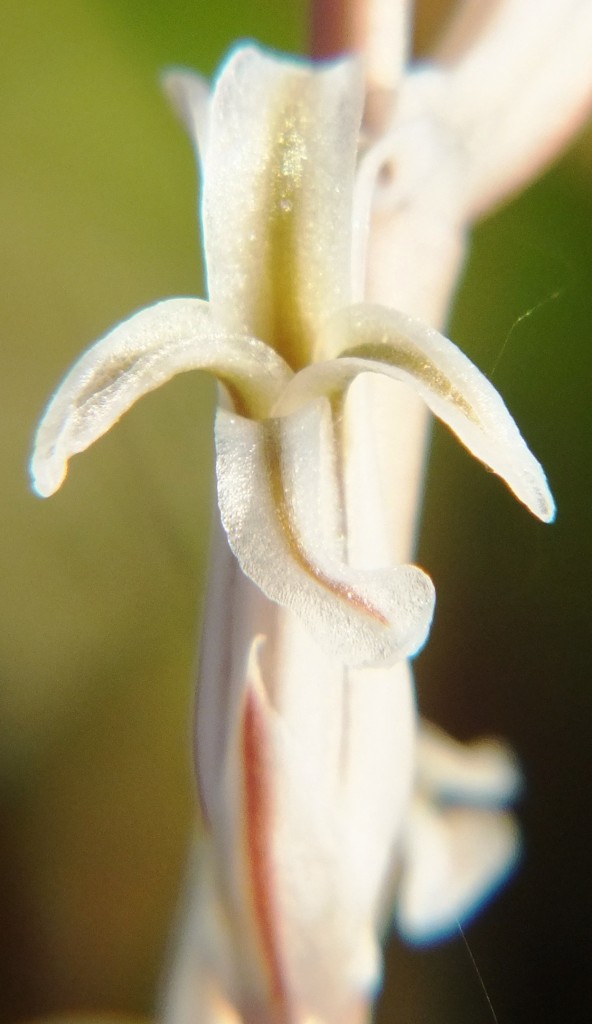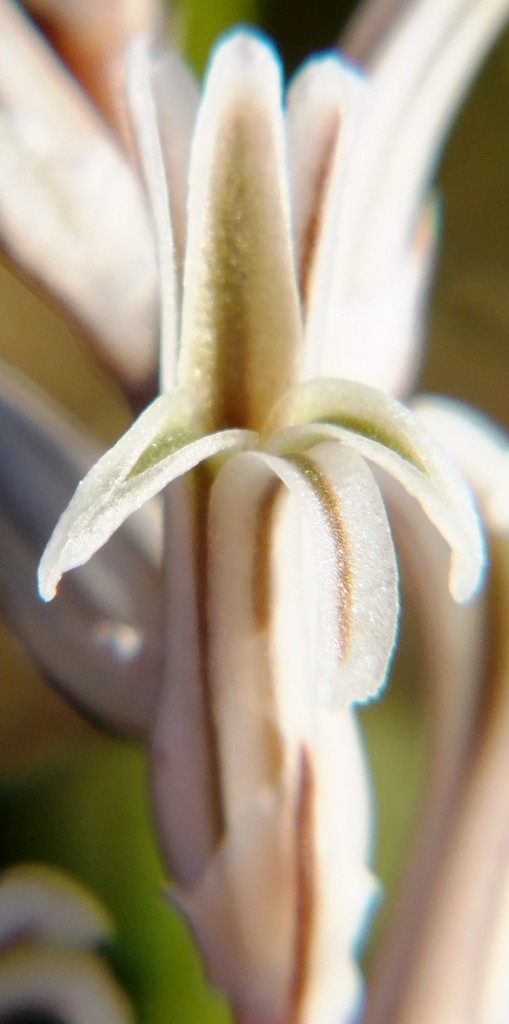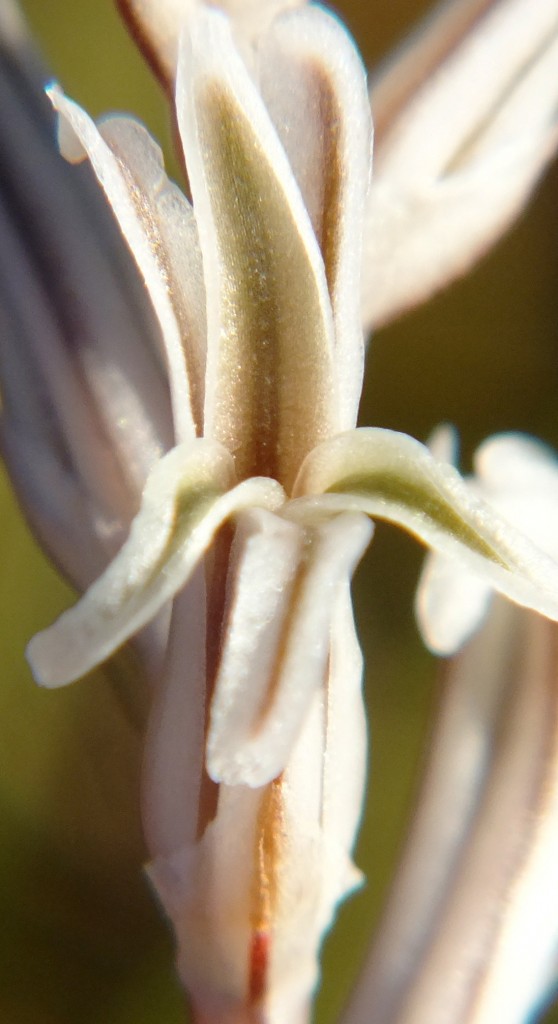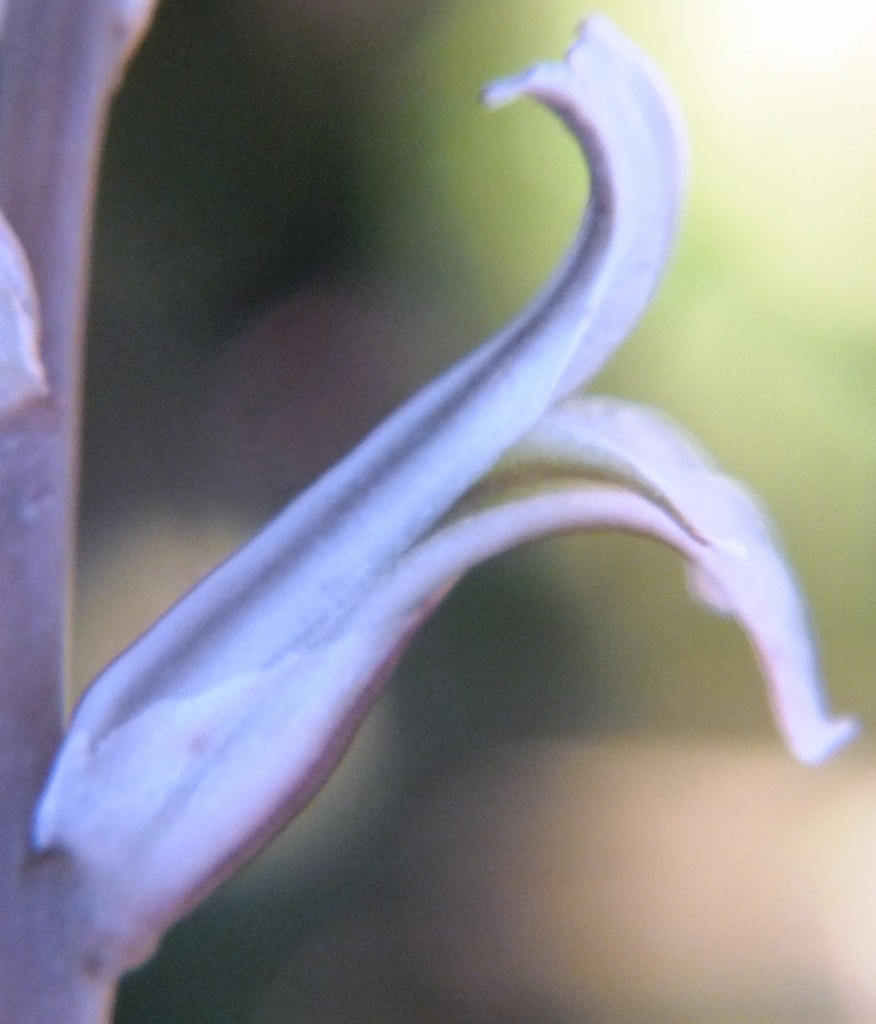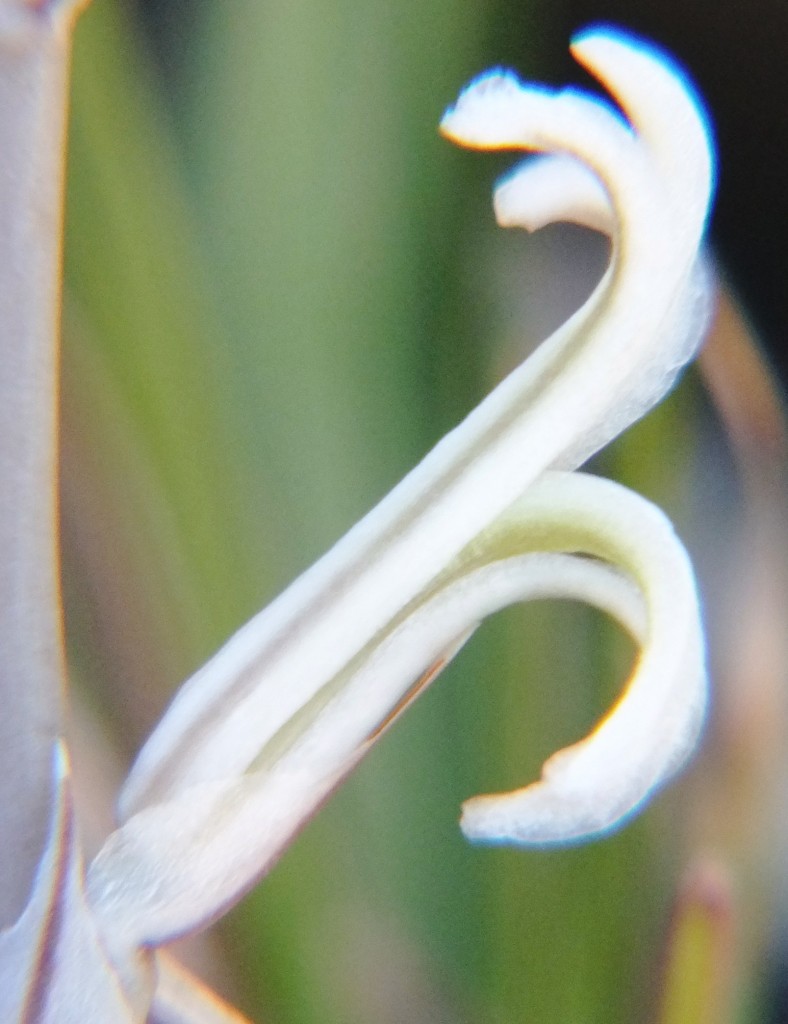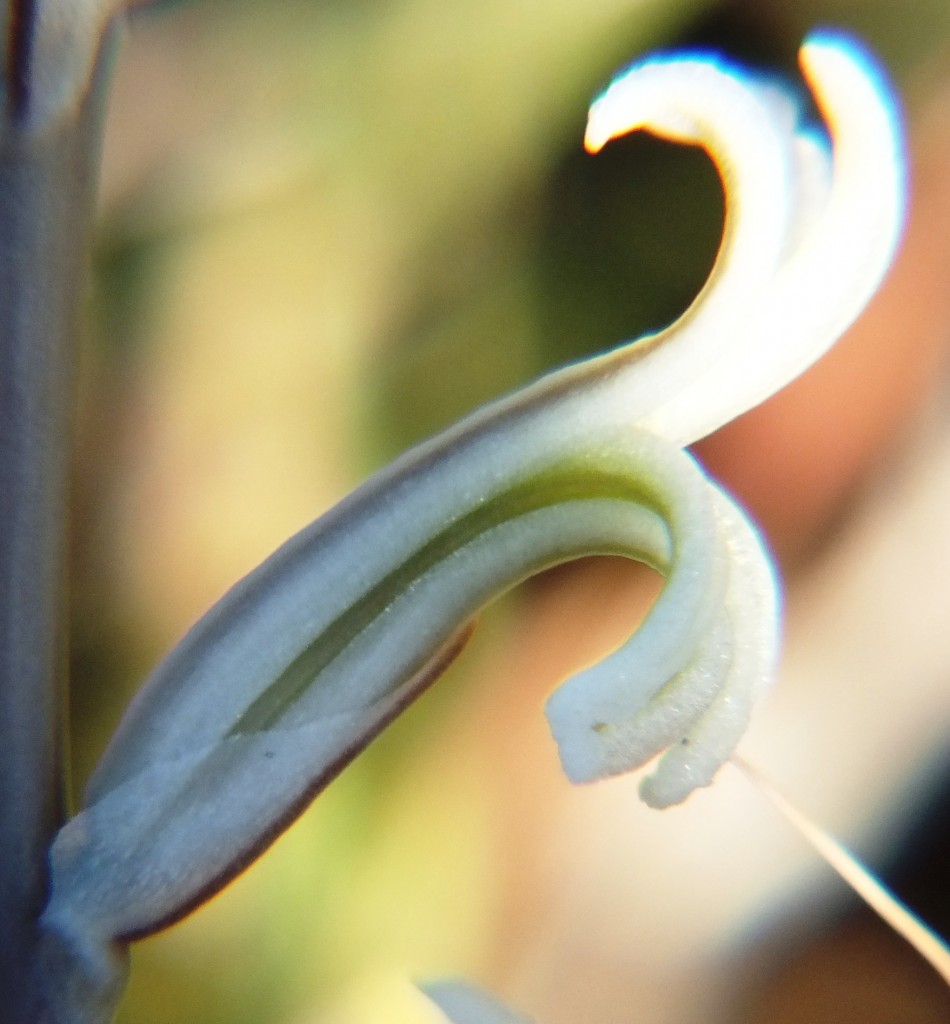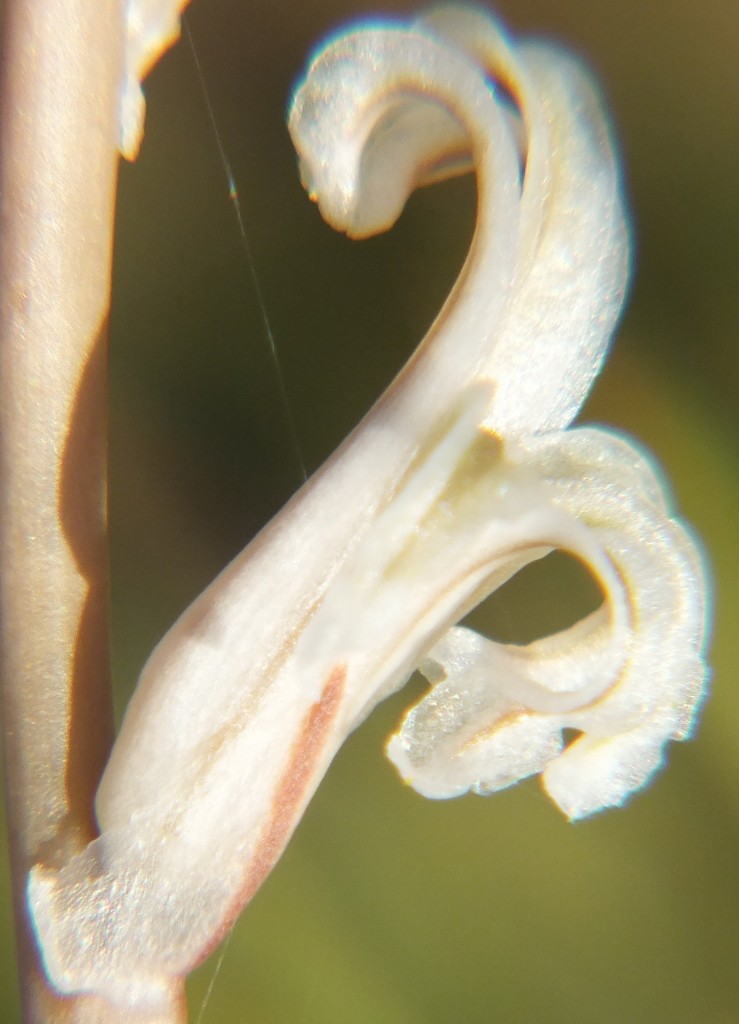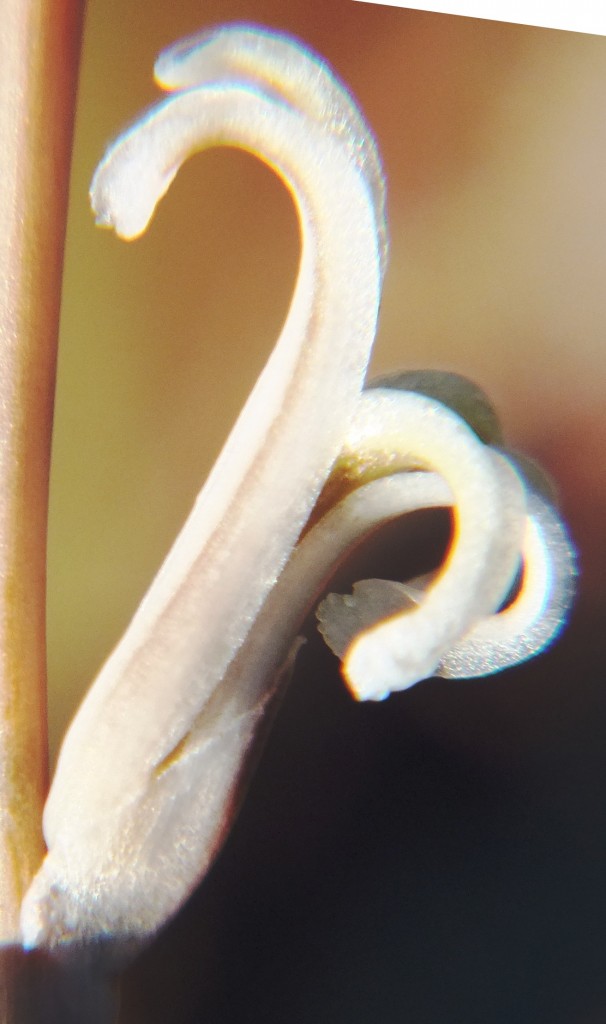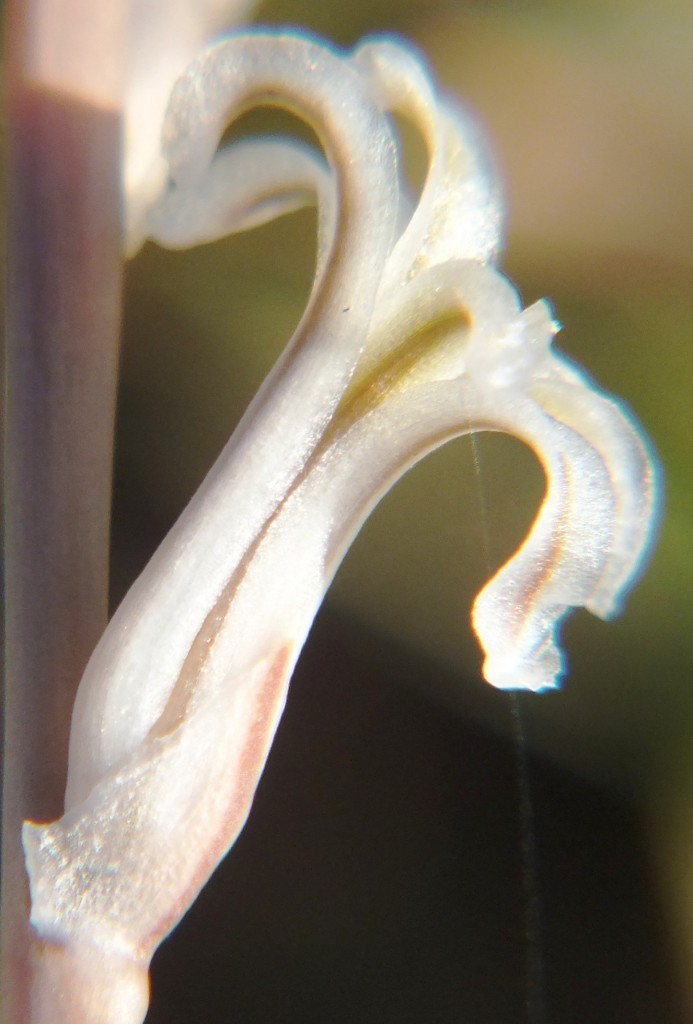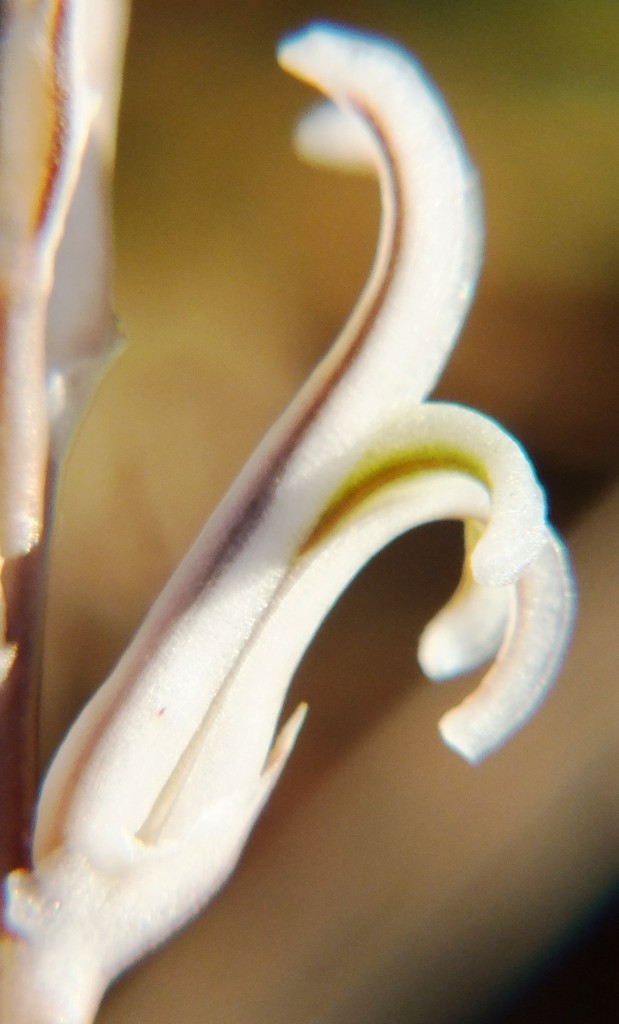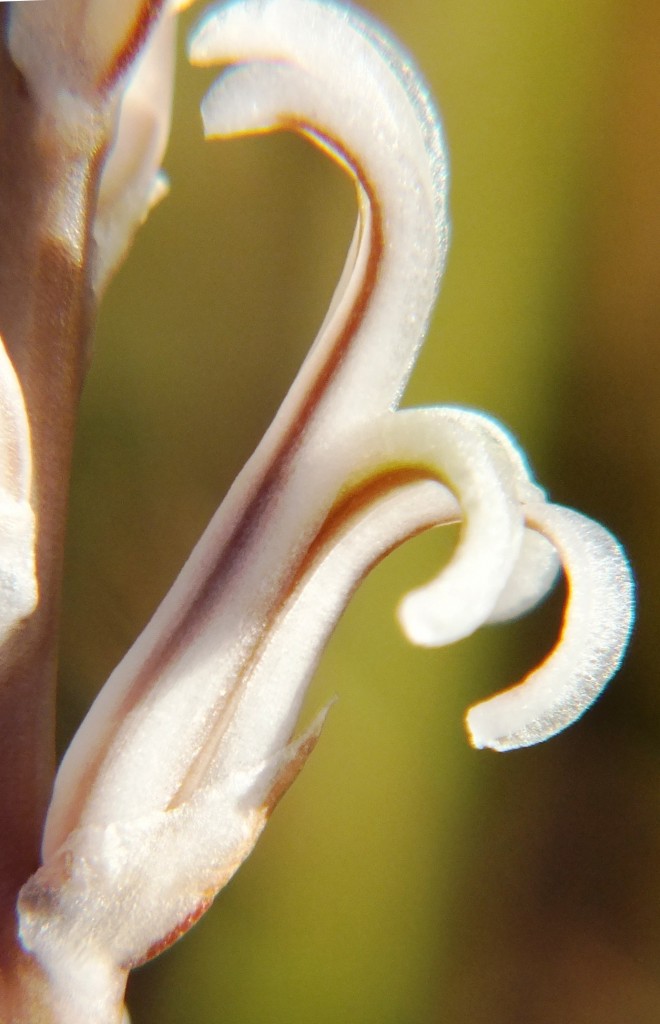- Haworthia Updates Vol. 11 – Table of Contents
- Still another view of Haworthia retusa and Haworthia mirabilis
- A sequel…Still another view of Haworthia retusa and Haworthia mirabilis.
- Die Nekkies Haworthia – A further visit and updated information
- Haworthia maculata leaf tips, faces and backs
- A further report on Haworthia mirabilis in the Greyton area.
Category Archives: Update 11
Still another view of Haworthia retusa and Haworthia mirabilis
I recently wrote an essay on the situation between Haworthia retusa and Haworthia mirabilis at Komserante east of Riversdale. The essay was entitled “My view of names” and is posted on the HaworthiaUpdates.org web site. Etwin Aslander posted some pictures from what he called Kruisrivier. These caught my eye because they did not look like the plants I know from a place of the same name. My known population is JDV95/62 and generally these plants have the dark colour and rough surface texture of H. mirabilis. The issue is that they are spring flowering whereas H. mirabilis is generally considered and observed to be late summer flowering. Etwin indicated to me where he had found his plants and I duly went to look.
In the process I incidentally called on a well known H. retusa population at the Skietbaan locality south of Riversdale. There has been a dramatic turnabout in the appearances of these plants since I last looked there 2 years ago. Whereas there were then huge clones well above ground level, the plants were now again smaller and drawn into the ground. I experienced this dramatic shift in plant appearances just west of the Frehse Reserve many years ago when there were giant size plants as opposed to my first visit when the plants were really small and withdrawn.
Kobus accompanied Daphne and I to Kruisrivier where the owners Wilhelm and Mandi Zietsman were extremely helpful. They told us also of a neighbor, Gert van Rensburg, who had also seen the same plants on his farm to the west. Mandi accompanied us on a jaunt to find that farmer and failing that we explored north of the original Kruisrivier locality. There we found another population of plants as well as H. floribunda (see Set 1 MBB7998). These two species H. retusa and H. floribunda were occupying different habitat and spaced about 100m apart. The H. floribunda was numerous and rather smooth leaved as well as paler green in colour than I expect from that species. The H. retusa-like plants were much smoother in surface texture than the original known population and they were in bud (see Set 2 MBB7999). We went back to the older population just to confirm that they were in bud too as we expected. Just so and the buds were just emerging from the rosettes. The plants were generally smaller than they were at a previous visit (see set 3 JDV95/62).
We parted company with Mandi Zietsman, and went off westwards intended to explore the Klein Kruisrivier area that seemed to better fit Etwin’s site indicator. By good fortune we ran into Gert van Rensburg of Wegwysersrivier. He eyed us very suspiciously indeed and obviously very reluctant to show anyone the plants. However, he very kindly relented, took us to the spot and left us to freely photograph and explore (see set 4 MBB8000). The plants can be described as midway between the generally rougher surfaces of JDV95-62 and the smooth surfaces of MBB7999. What was more dramatic is that there were six flower spikes so that flowering is possible as early as July 6th.
We returned via another route regretting leaving distant habitat unexplored. But we did find another population of H. floribunda, a little more toothed and perhaps brighter green than at Kruisrivier.
I also note that I long ago confirmed Smith’s record for H. retusa ‘turgida’ at Klein Kruisrivier in the upper Wegwysersrivier Gorge. This is the small spinose proliferous version known elsewhere from the Langeberg Mts.
Digesting this new information is a bit difficult in view of the very opposed views of what names mean and how they should be applied. Taking all the populations that I have explored and written about, my perspective is further to a view expressed in Haworthia Update 7. This is that H. retusa and H. mirabilis are uncomfortably close. The only thing that appears to separate them is the yellowish green and smooth tendency in H. retusa and the darkish green and surface rough tendency in H. mirabilis. Further to that is of course the question of spring flowering versus late summer flowering. But I have already reported several case of hybridization across this divide as well as the Komserante situation. Here we now have plants in three populations that occupy middle ground and one of these populations has a significant degree of a winter flowering capacity. The identification should perhaps utilize the chemical equilibrium symbol. This is not quite it “↔” as the better symbol comprises halved arrows pointing in opposite directions.
I wish to add that in the case of plants I attribute to H. ‘turgida’ at Towerlands, I commented on the very real possibility of a close connection to H. emelyae. There is also evidence for this elsewhere. I use the name ‘turgida’ like this because of the uncertainty of it really being H. retusa var. turgida or perhaps H. pygmaea.
My experience in other situations viz. H. limifolia, H. herbacea/H. reticulata, H. arachnoidea/H. mucronata, H. cymbiformis/H. cooperi, Kiewietsvlakte etc. all suggests to me that the view of species is grossly distorted in the splitter direction. It is clear to me, if to no one else, that H. retusa and H. mirabilis form a very cohesive entity with ramifying oddities the length and breadth of the distribution range. I do not cover this issue here, but there is the added complication of the involvement of H. floribunda. It seems to be very discrete in most places, whereas at others it seems to get lost mainly (only?) in H. mirabilis. This may be because the introgression is favoured by the same flowering season. H. retusa and H. mirabilis are drifted apart by the difference in flowering season but it is by no means anything more than a general observation.
I have added the images of the available flowers as well as that of a bud to show the flared fishtail bud-tip that the southern Cape species tend to have. The flowers are variable and it is difficult to make a statement that characterizes them i.e. no composite image forms.
Acknowledgement: I would like to acknowledge Etwin Aslander’s input. Wilhelm and Mandi Zietsman were extremely helpful. Gert van Rensburg was surprisingly well informed about the plants too and very generous in his attitude to us. Part of the pleasure of field work is meeting people like this.
Set 1. MBB7998 H. floribunda Kruisrivier
Set 2. MBB7999 H. retusa Kruisrivier
Set 3. JDV92/65 H. retusa Kruisrivier
Set 4. MBB8000 H. retusa Wegwyserivier
MBB8000 flower faces
MBB8000 flower profiles
MBB8000 flower bud
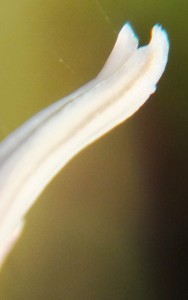
Addendum: To demonstrate the problem of similar looking plants that appear in different populations, I take 3 plants from the original Kruisrivier population (JDV92/65) see figs 1 to 3. Fig. 1 is obviously a mirabiloid plant and if this population flowered in late summer it would probably be identified as H. mirabilis. The figs 2 and 3 are more retusoid. I leave out plants from the newer Kruisrivier population (MBB7999) because none of the plants have the rougher mirabiloid leaf surfaces. I add a Wegwysersrivier (fig. 4 MBB8000) plant that is again mirabiloid and like Fig. 1 except that it appears to be a spring flowering population with a significant number of plants in flower in early July. From there I take a plant from Komserante (MBB7779) that flowers in late summer but is apparently generally hybrid with H. retusa. Moving eastwards from Riversdale and impinging on H. mirabilis splendens, I show a plant MBB7762 from Platkop (fig. 6) where both H. mirabilis and H. retusa occur with occasional hybrids. Fig. 7 is MBB7818 H. mirabilis Windsor SE Riversdale, where the plants frequently have a frosted appearance because of minute surface spines.
There is a significant geographic jump with fig. 8 MBB7850 H. emelyae north of the Langeberg at Aasvoelvallei. This is a population that I have noted elsewhere that highlights the probable relationship of H. emelyae with the H. retusa turgida and pymaeaoid elements from Herbertsdale eastwards. Fig. 9 is a plant of MBB6666 Tradouw Pass that I recognize as a hybrid population H. mirabilisXretusa. Inland from there are several populations, MBB7899 is H. mirabilis, Heuningklip (fig. 10) and MBB7896 H. retusa nigra also Heuningklip (fig. 11). East of that are three populations of H. mirabilis, MBB7912 and MBB7913 Rietkuil and MBB7919 Van Reenens Crest (figs 12 to 14).
As only single plant comparisons, it seems fairly safe to say that, bar flowering time and figs 2 and 3, they are all similar. However, the variability in each of these populations is great and this has been reported elsewhere in the Update volumes. If one had to now take figs 2 and 3 and look for similarities in other populations, it would be very easy to demonstrate a complete gradation from what could be construed as typical H. mirabilis through to typical H. retusa through a large array of populations.
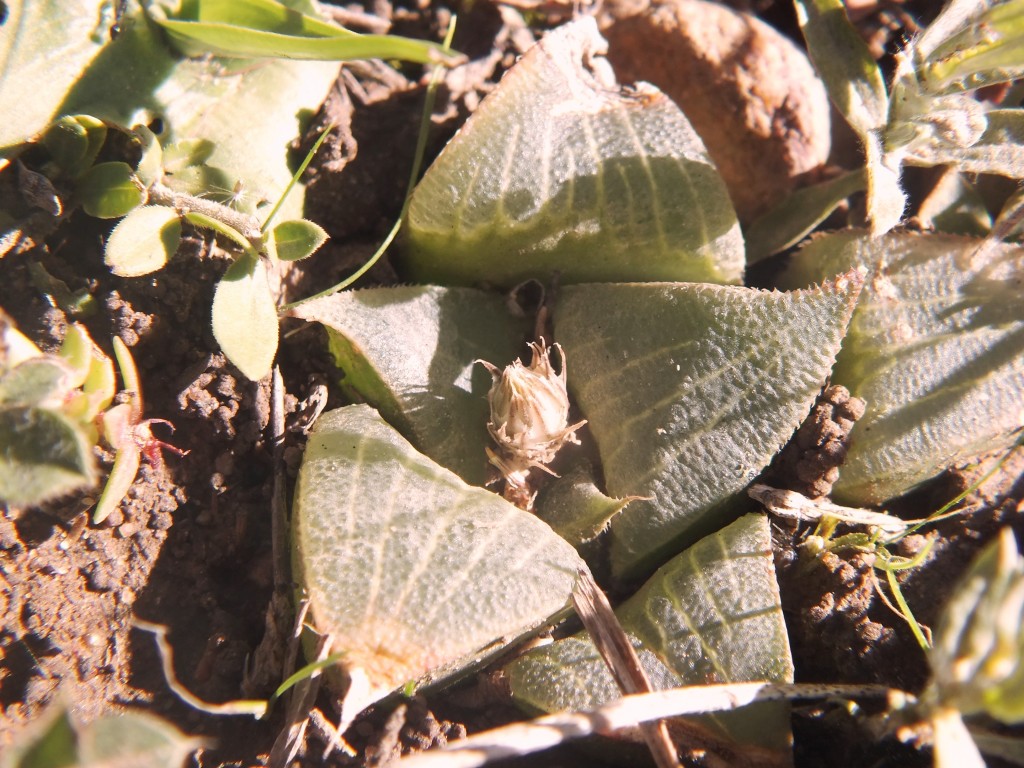
Fig. 1. JDV95-62.9 H. retusa, Kruisrivier 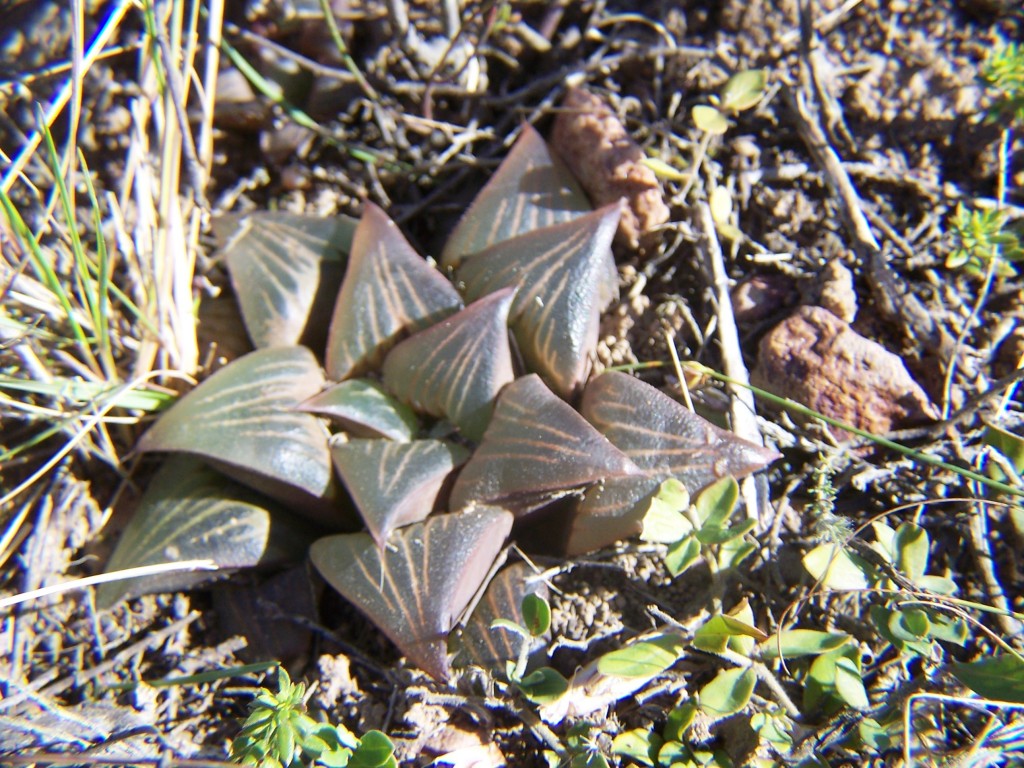
Fig. 2. JDV92-65 H. retusa, Kruisrivier 
Fig. 3. JDV92-65 H. retusa, Kruisrivier 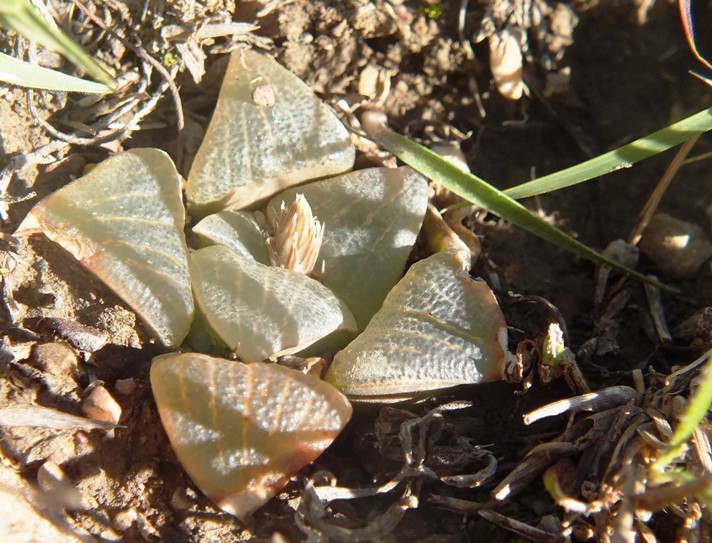
Fig. 4. MBB8000.5 H. retusa, Wegwysersrivier 
Fig. 5. MBB7779 H. mirabilis. Komserante 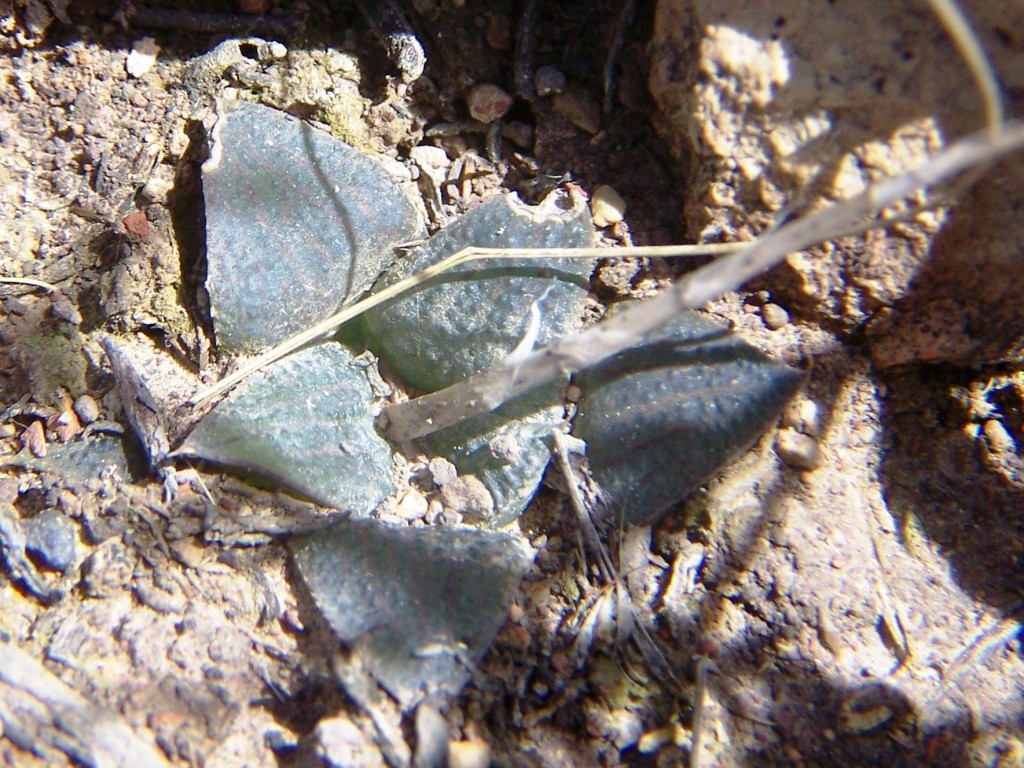
Fig. 6. MBB7762, H. mirabilis, W Platkop 4616 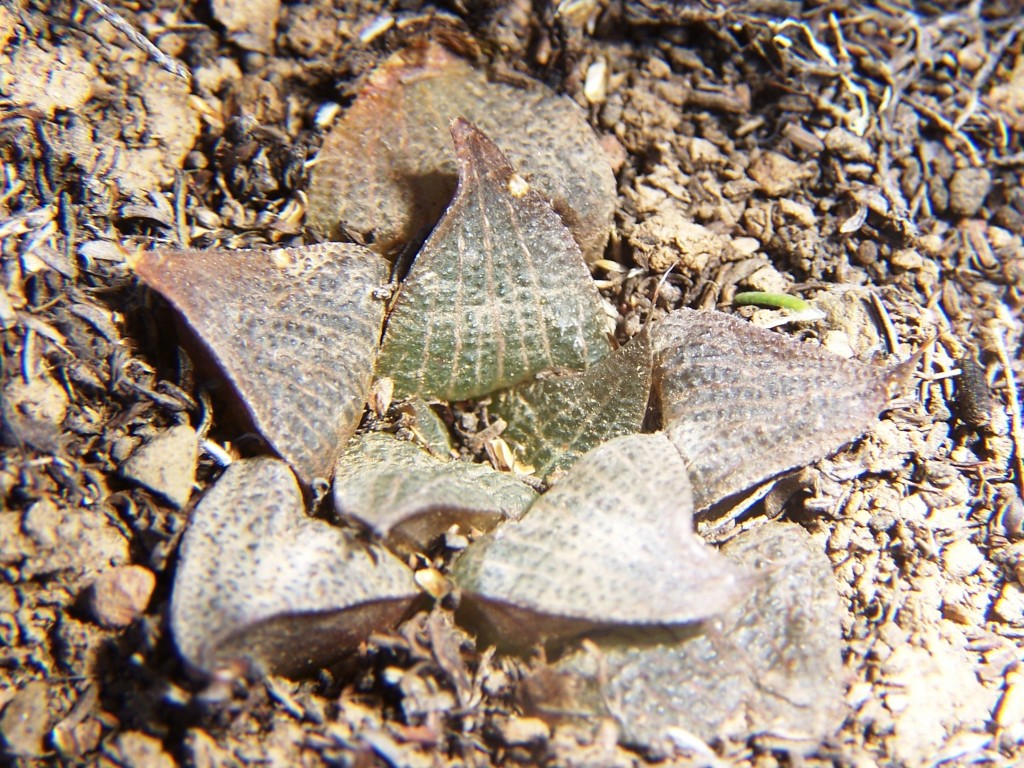
Fig. 7. MBB7818, H. retusa, Windsor 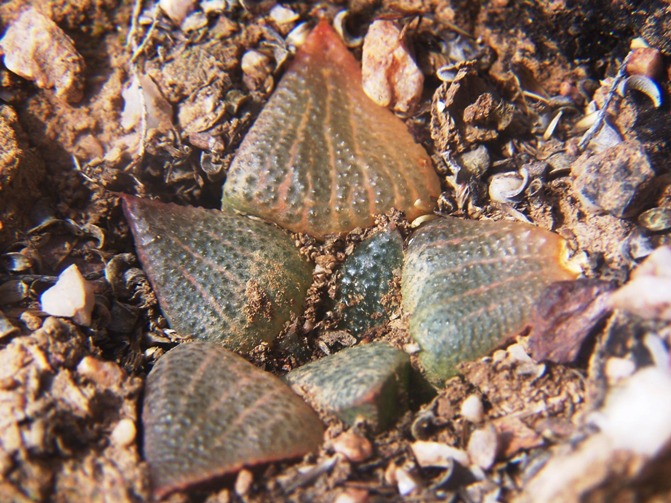
Fig. 8. MBB7850, H. emelyae, Aasvoelvallei 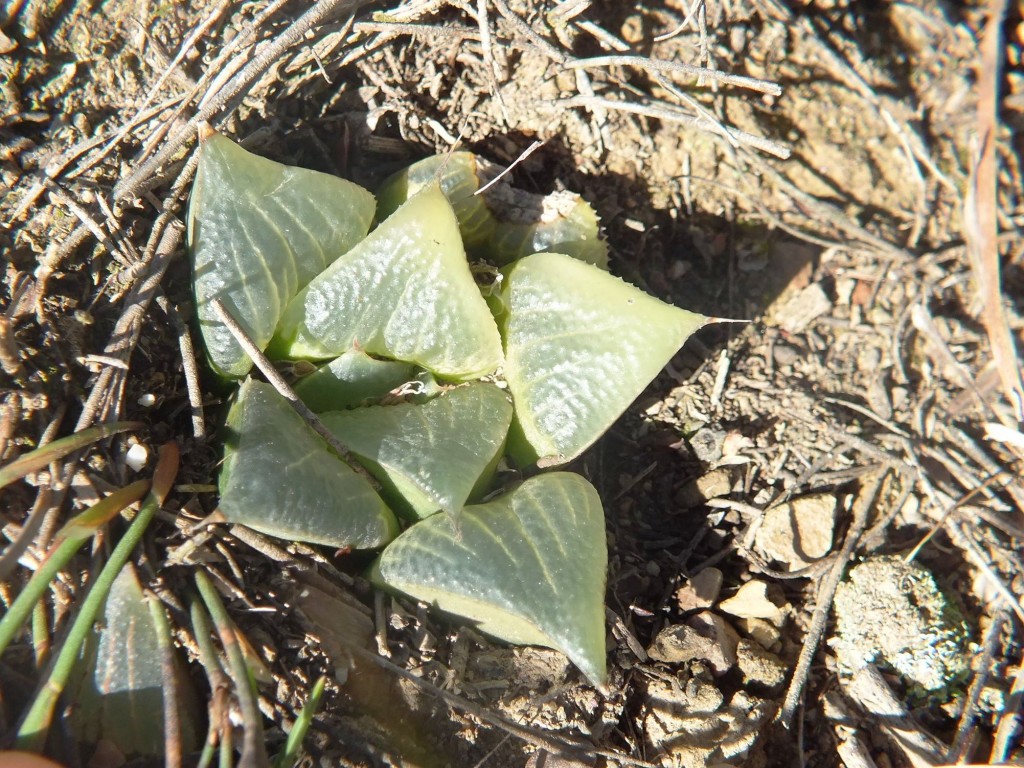
Fig. 9. MBB6666 H. mirabilisX retusa, Tradouw 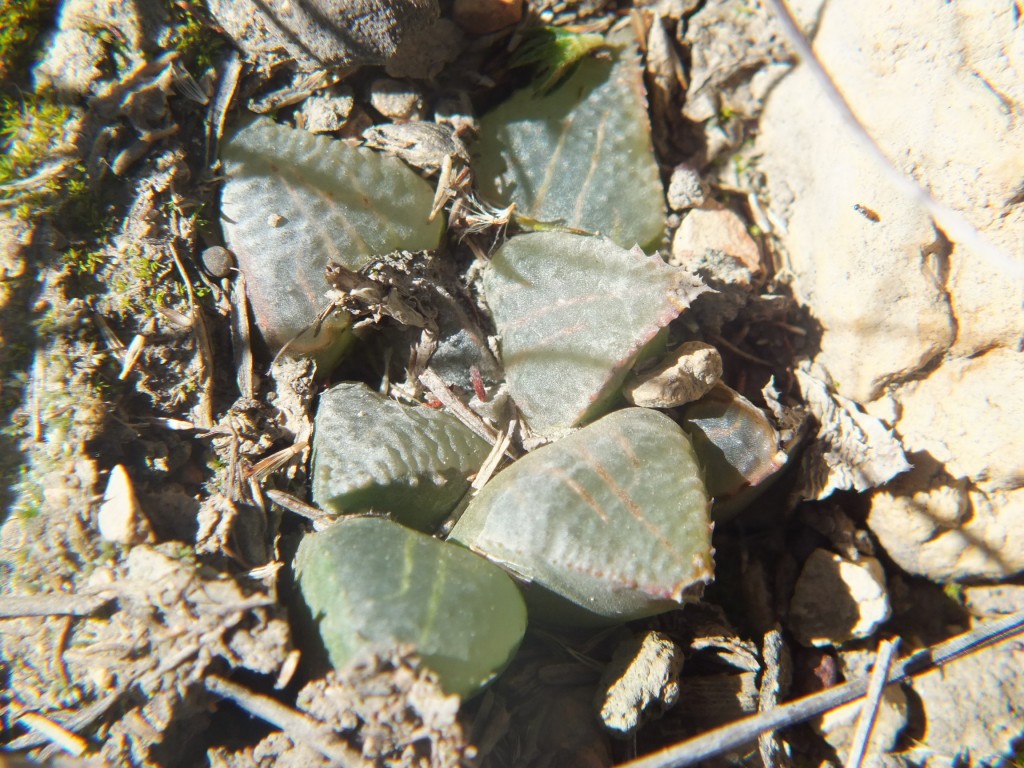
Fig. 10. MBB7899 H. mirabilis, Heuningklip 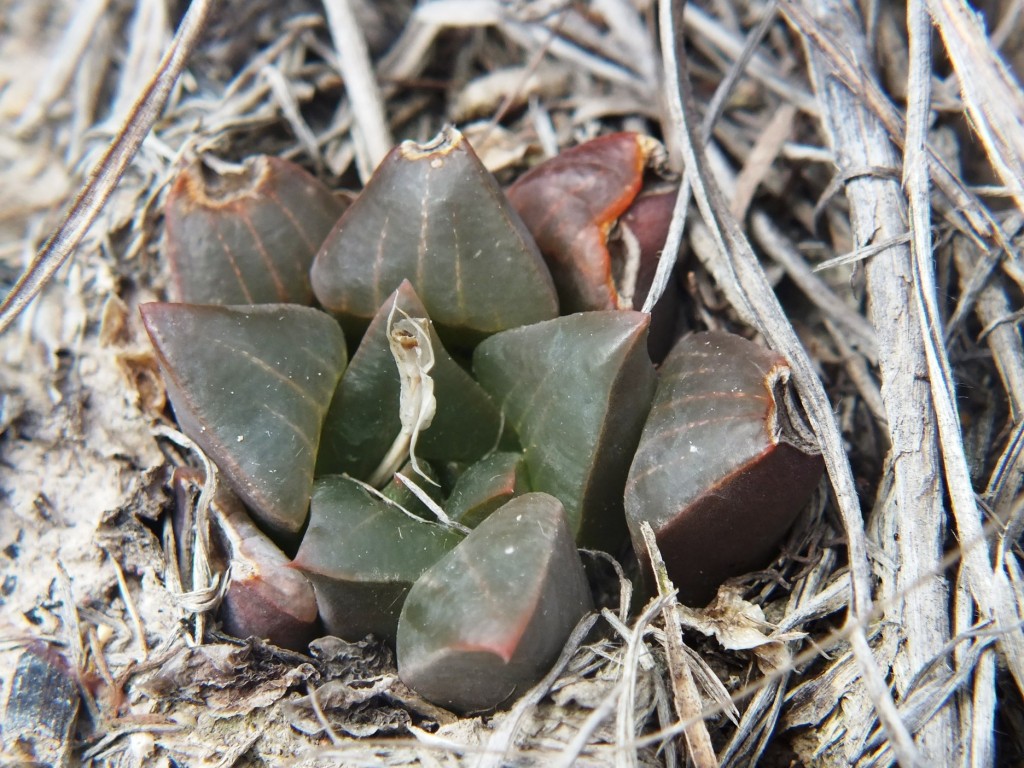
Fig. 11. MBB7896 H. retusa nigra, Heuningklip 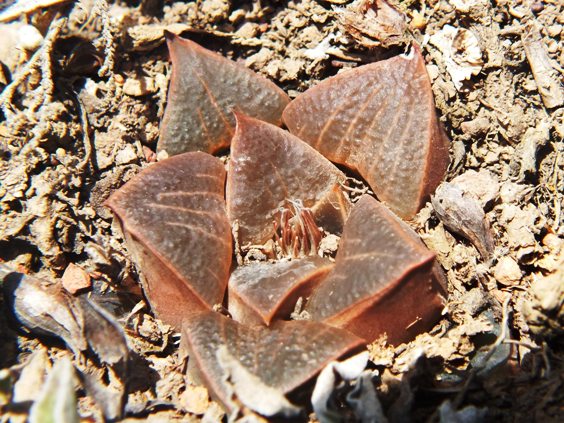
Fig. 12. MBB7919 H. mirabilis, Van Reenens Crest 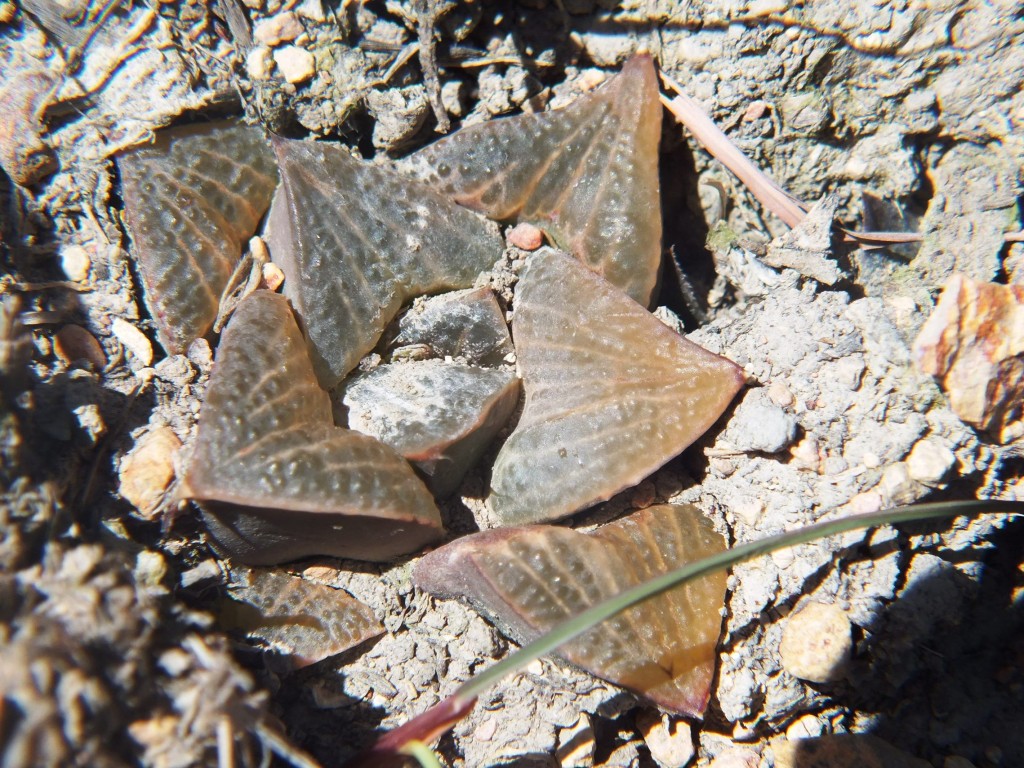
Fig. 13. MBB7912, H. mirabilis, Rietkuil 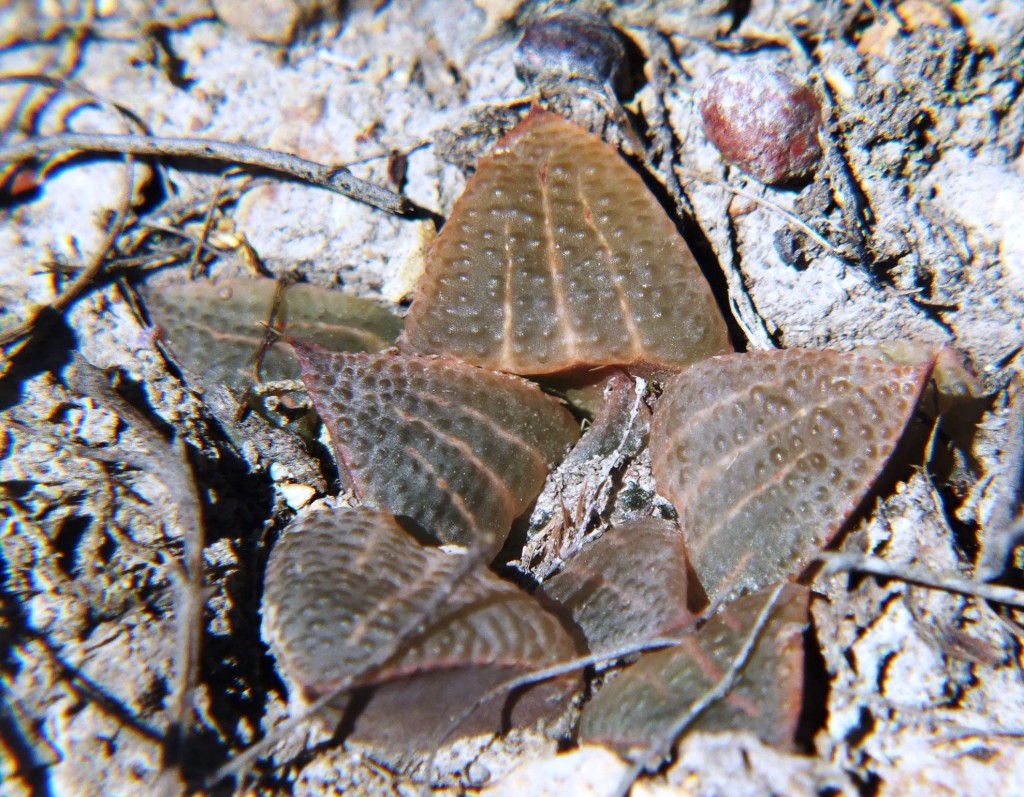
Fig. 14. MBB7913 H. mirabilis, Rietkuil
A sequel…Still another view of Haworthia retusa and Haworthia mirabilis.
It has long been my contention that there is no separation between Haworthia retusa and Haworthia turgida. It is one very variable system viz H. retusa, with a larger fairly non-proliferous plants tending to level areas and then smaller proliferous plants on steeper habitats. There is huge variability among members of any one population and of course much more between populations. Over and above this is the relationship of this apparently one single system, with H. mirabilis that is probably even more complex and varied. If one takes all the known populations and variants into consideration it become necessary to ask if H. retusa and H. mirabilis are also not just elements of one system , and one species. If all the considerations are summed and referral is made to vegetation and speciation drivers; what constitutes an area of endemism, then I am sure the answer will be “Yes”! What seems to have happened is a natural sequence. As sampling has progressed so has there been recognition of differences. The logical outcome is that sampling progression should lead to understanding and synthesis by reduction. Unfortunately there will be diehards that stay with the differences syndrome and cannot see the similarities.
Die Nekkies Haworthia – A further visit and updated information
Bruce Bayer has now been back to Die Nekkies and returns with more detail to add to the broader Haworthia maculata picture, and considerable detail for H. maculata at its home range located north of the Brandvlei Dam on a low range of hills named Die Nekkies. (See Haworthia Updates Volume 9, A myth corrected to – Haworthia maculata var. livida (Bayer) Bayer – and flowers ignored). These low hills extend for 10-12km east to west along the north shore of the Dam. They are geologically Witteberg Sandstone and H. maculata is not known off this formation except in the lower Hex River Pass where it is found in Table Mountain Sandstone. H. herbacea (and H. reticulata) are more abundant on the Dwyka Tillite, and on Bokkeveld and Ecca shales. The Wiiteberg is sandwiched between Bokkeveld Shale and Dwyka Tillite, and Ecca Shale of the Karoo System overlies Dwyka Tillite. Because of considerable faulting and folding the Cape Terrain is geologically and topographically very broken and there are a multitude of skeletal rocky habitats – the raw rock is very exposed and the surfaces are erosional. Haworthia are rarely found on depositional sites. The fact that there is also a stable and dependable winter rainfall also contributes greatly to the success of small succulents in situations that cannot maintain high biomass levels. This all drives home the fact that Darwin’s dictum that distribution is the lintel to understanding species is doubly true for Haworthia where morphological differences are minimal.
Haworthia maculata leaf tips, faces and backs
Die Nekkies – a selection of Haworthia maculata plants with their leaf faces and backs showing variability over this extensive area.
I took the following photographs originally just to show how much the leaves varied in the species. The only locality data record was Die Nekkies with no differentiation into populations. The variability was firmly established and became apparent even within populations where the degree of variation surprised even me. It was also extrapolated across the genus.
As an afterthought, this turned my mind to Farden and Smith’s observation about the idiocy of trying to make varieties in Haworthia attenuata on the basis of leaf characters where the individual leaves varied so much that several varieties could be detected from the same plant. This is exactly what Breuer, Marx and Hayashi are actually doing when they get carried away by their justification for new species, drawing conclusions from single plants because of the inability of the mind to hold many images. This is exactly the way in which “H. magnifica” is maintained as a species when the imagery is based on the original single plant originally described. There can be no such thing as “H. magnifica” because the variation across the range of populations from Riversdale to Riviersonderend is so immense and complex.
The following photographs show a random selection of plants and their leaf faces and backs from Die Nekkies. These were taken some time ago when I did not record actual populations. They do record the variability of plants and leaves over this wide area which I classify as Haworthia maculata. For subsequently photographed plants I have recorded my population collection numbers which are indicated on the map found in Die Nekkies Haworthia – A further visit and updated information.
A further report on Haworthia mirabilis in the Greyton area.
Appendix 11 to Haworthia Update Vol. 8.
In appendix 6 I reported on H. mirabilis just east of Greyton and also at Schuitsberg further east and south. I undertook this excursion to fill out on a population at Uitkyk (MBB7092) west of Genadendal illustrated with one image in Haworthia Revisited. En route we discovered still another population along a road from Caledon to the northwest (8055 Hammanskraal), briefly called at a site east of the bridge on that road crossing the Riviersonderend (MBB8056). We also visited the population MBB8040 east of Greyton and explored some of the hiking trail between Greyton and McGregor.
The population 7092, H. mirabilis, at Uitkyk, is indeed interesting. It is a steep riverside, south facing, vertical slope. There are many plants that may not receive any direct sunshine for most of the summer and of course none in winter. It is really curious because there are groups of plants that seem to be holding clumps of moss, lichen and a modicum of soil to the rock. There are orchids, oxalis, shade-loving Asparagus, and all the small bulbs one expects in these moist south facing habitats. The rock seems to be metamorphosed from fault-shearing heat and pressure on shale. Among the illustrations is a view looking east along the road with the roadside south-facing habitat on the left. The Riviersonderend River is immediately on the right. In the distance ahead is Leeukop, the type locality for H. mirabilis ‘rubrodentata’. That is a dry north-facing slope.


